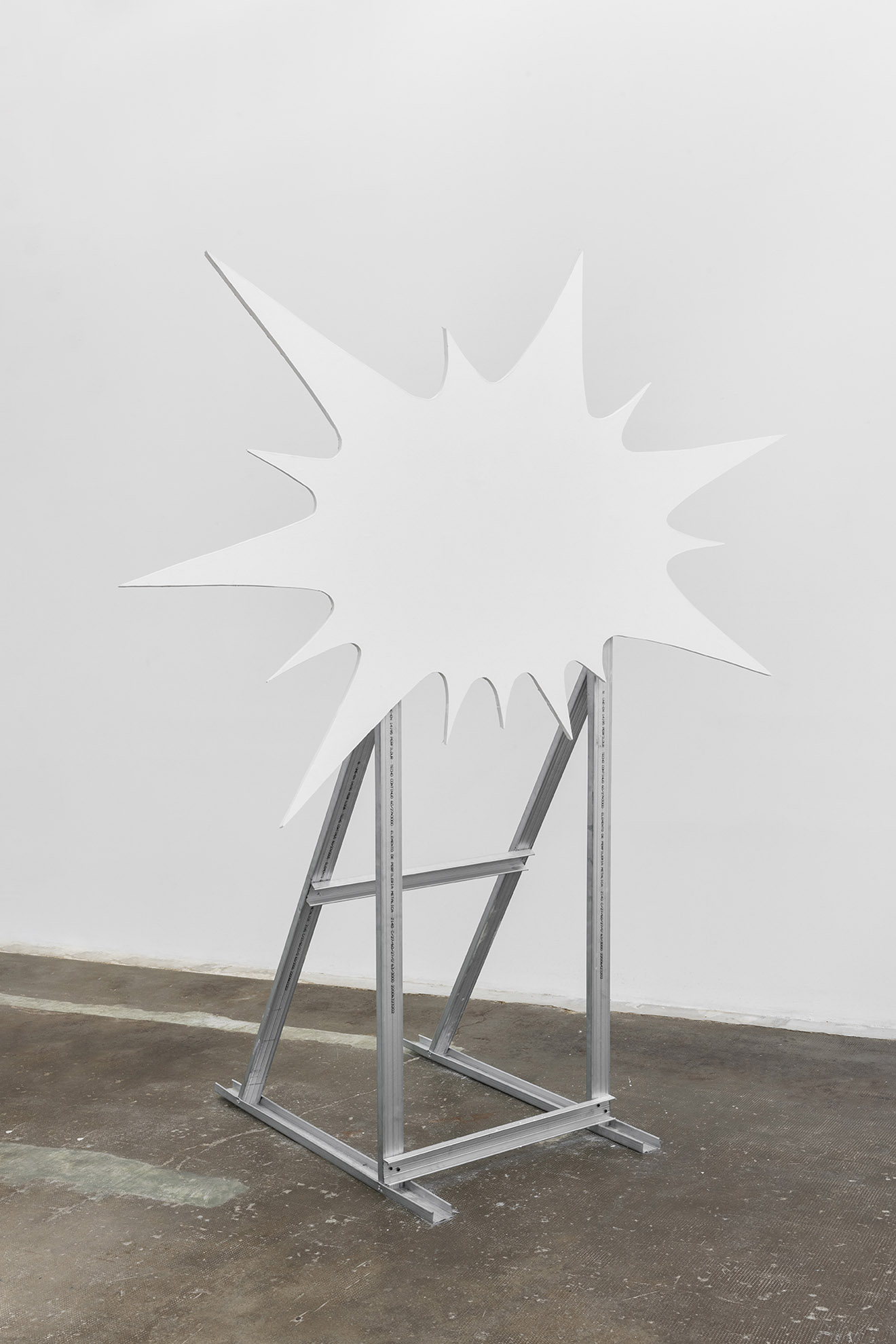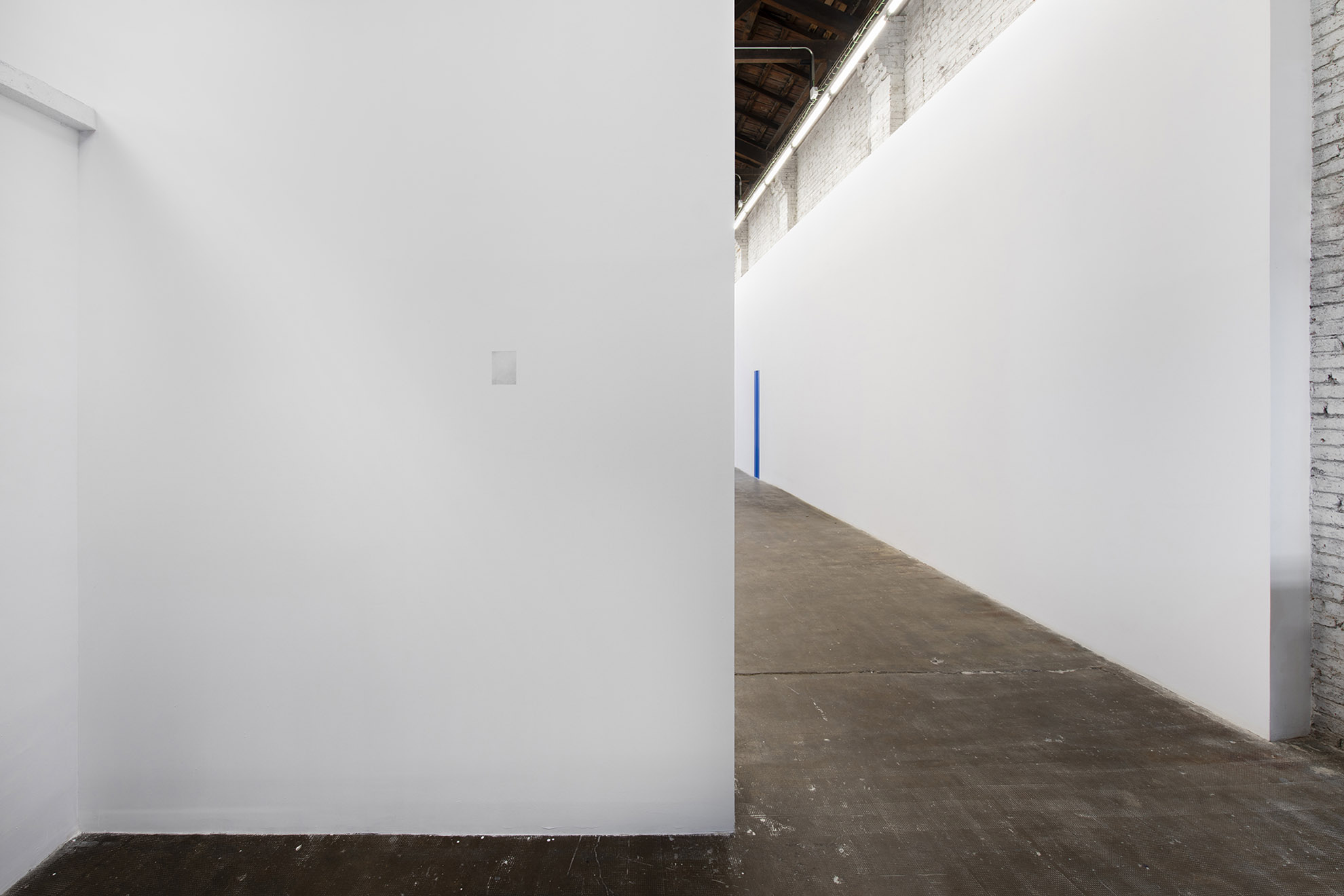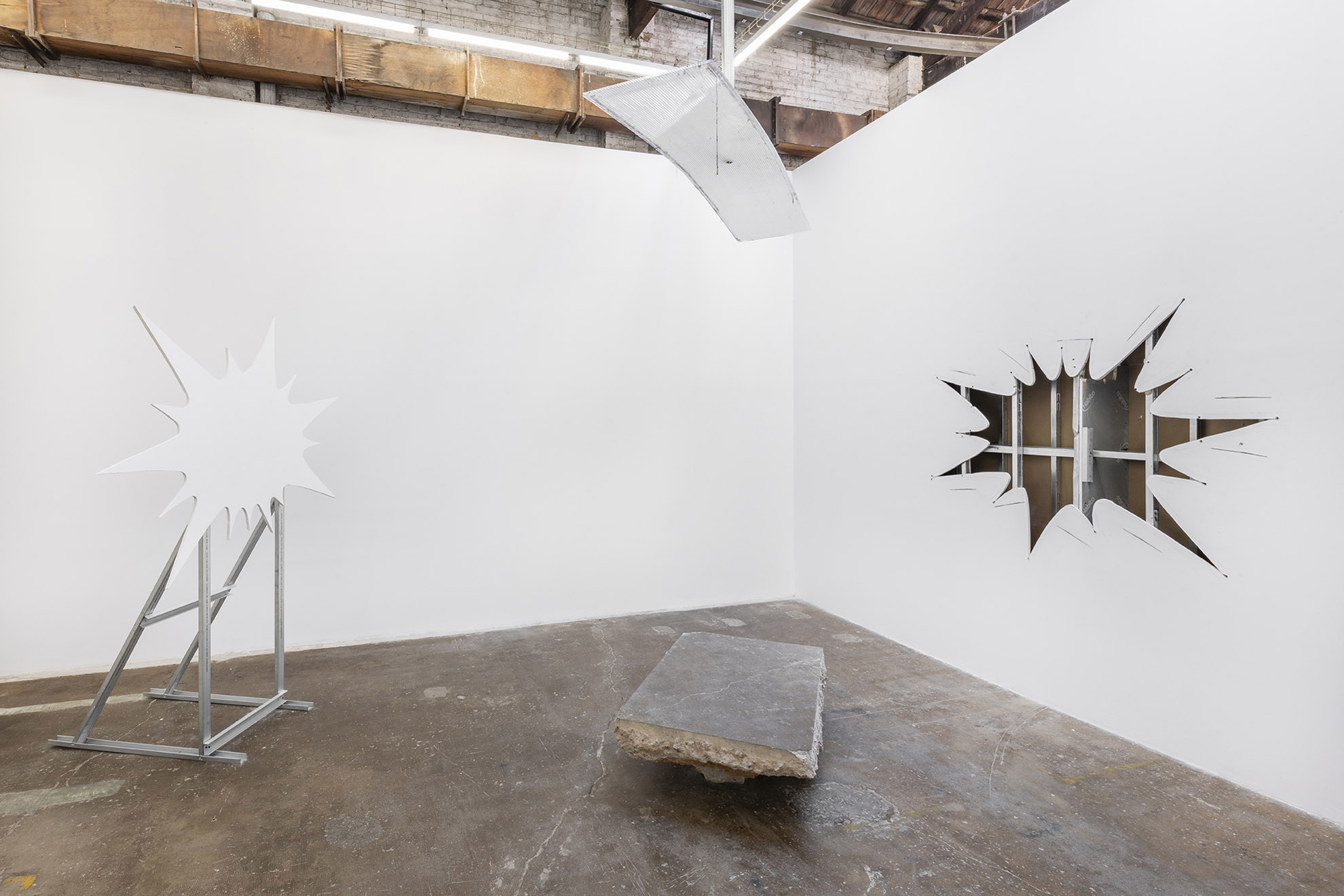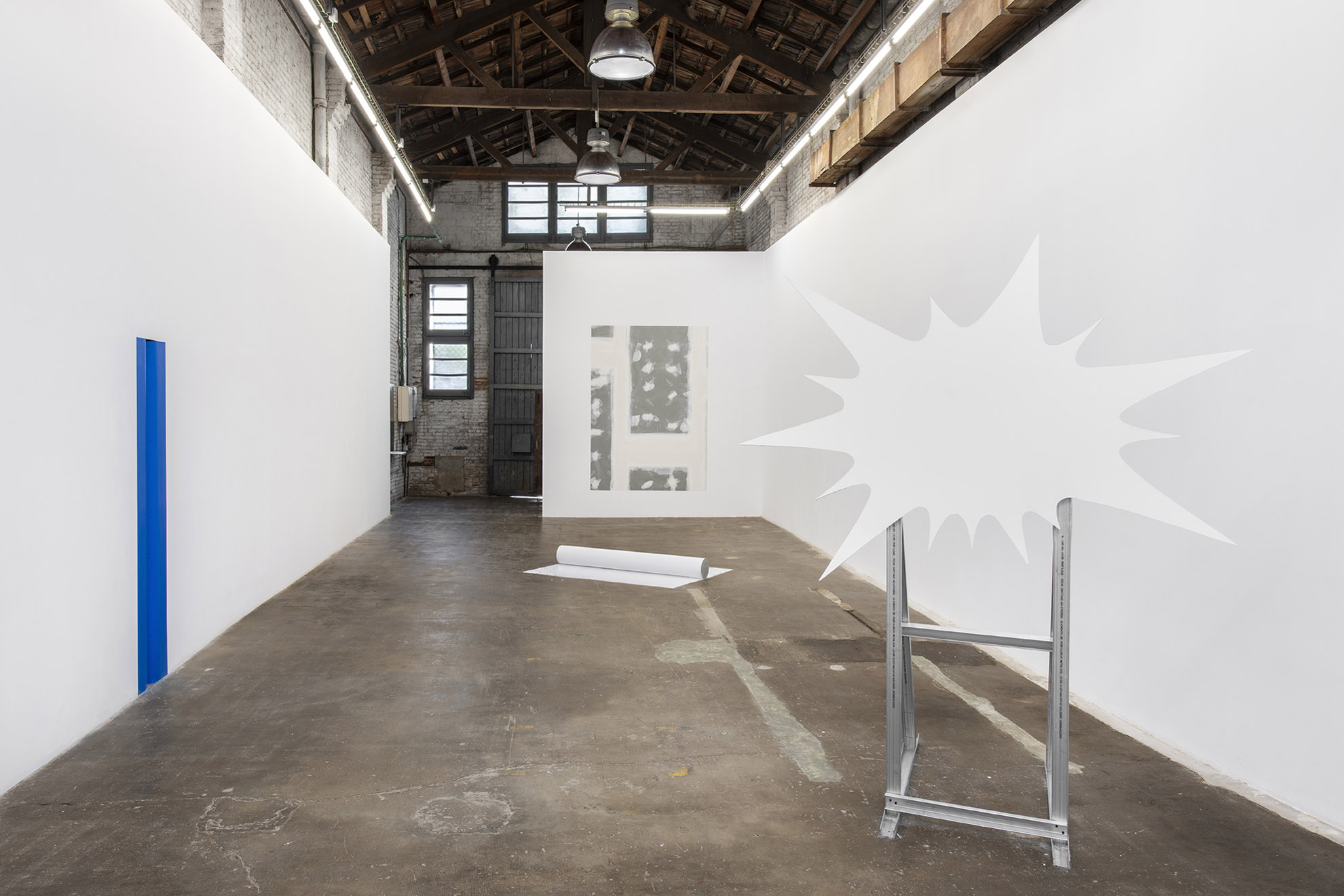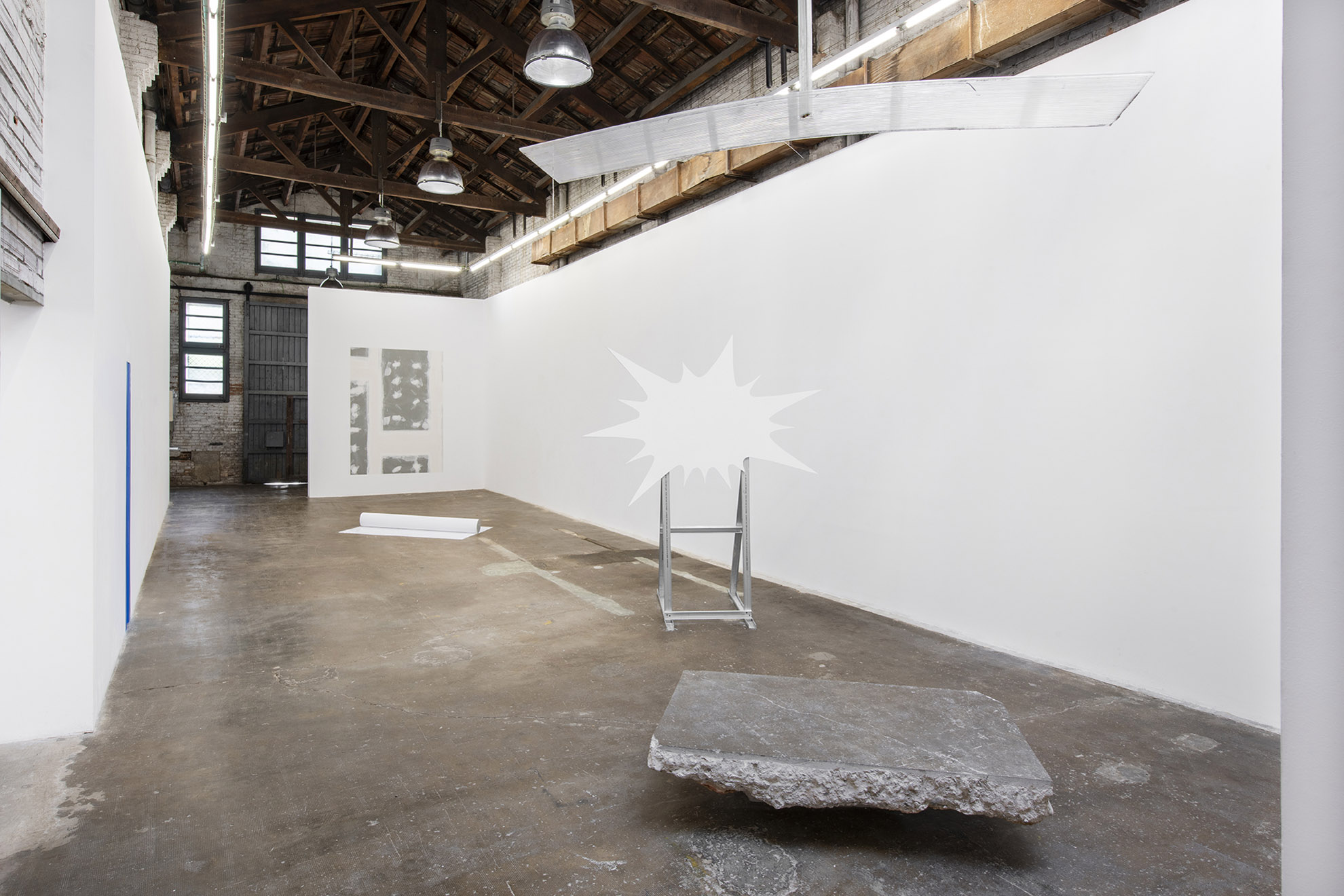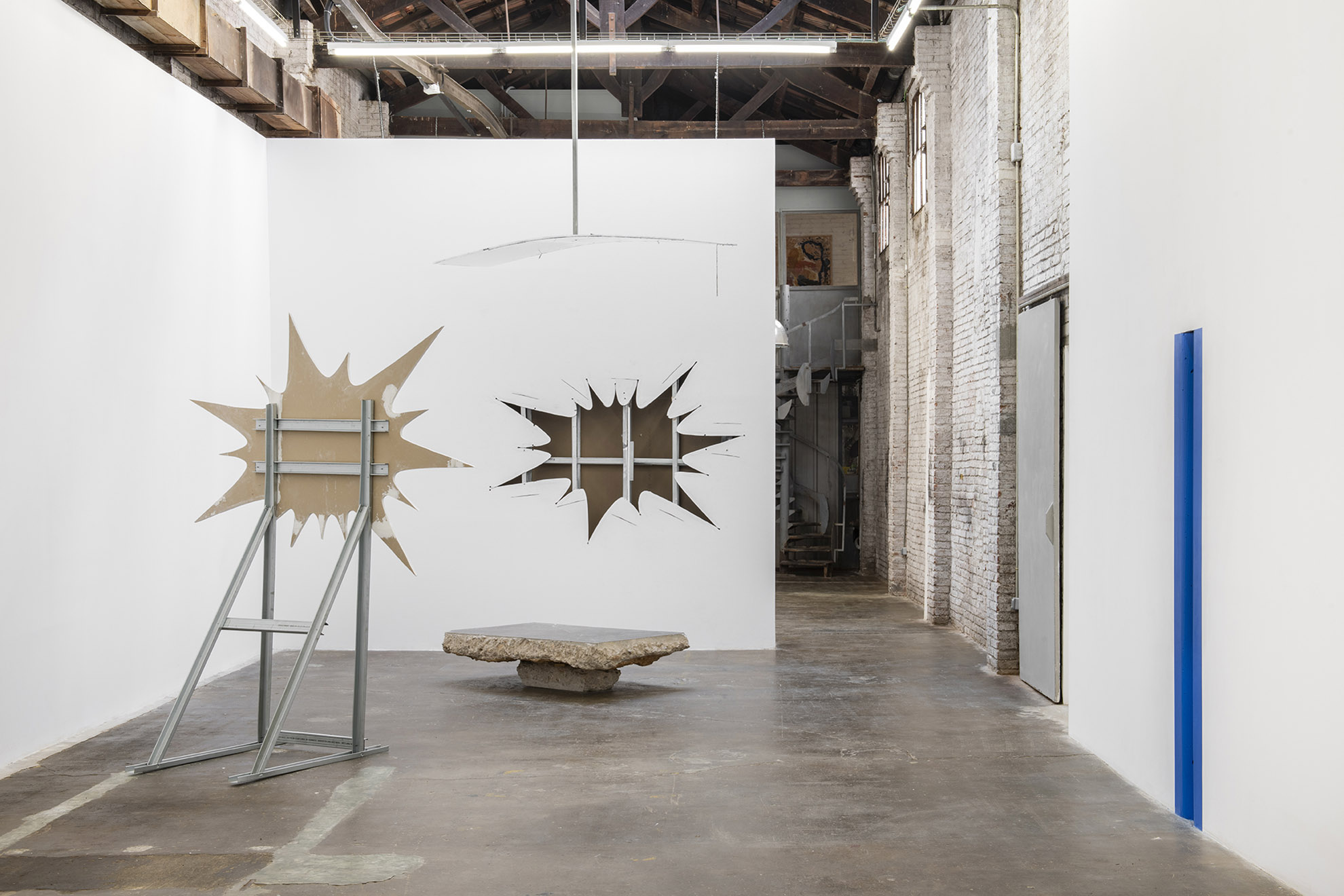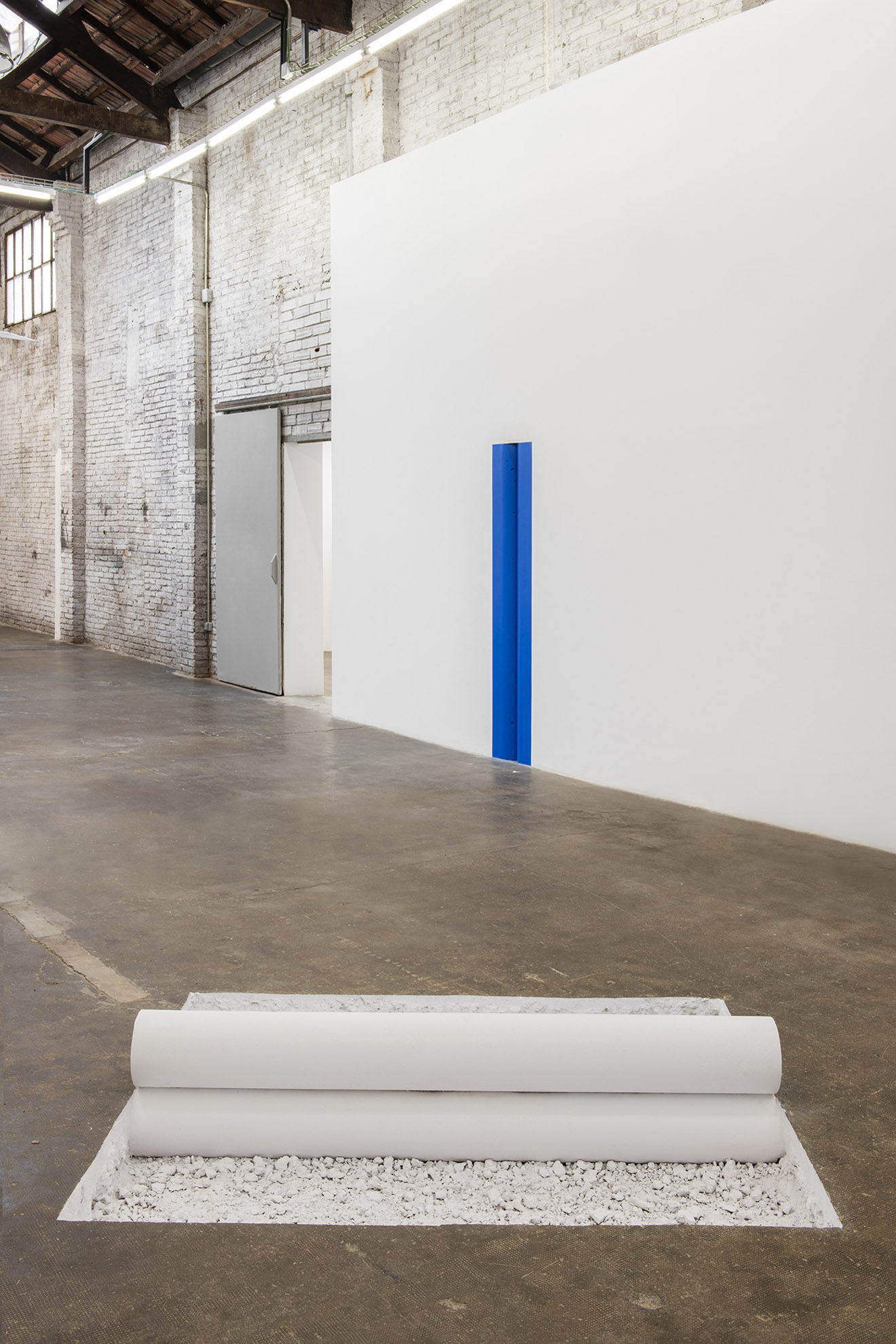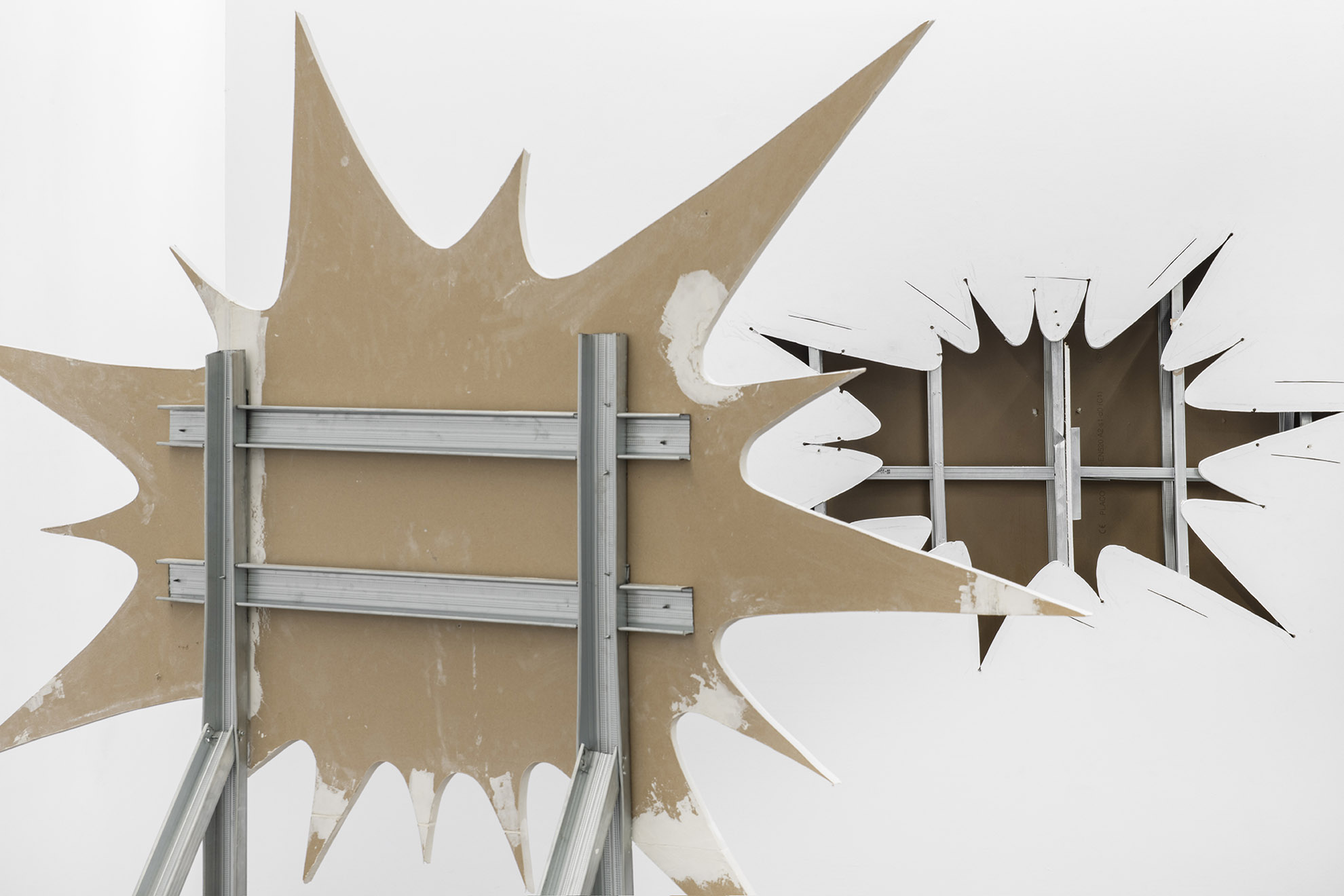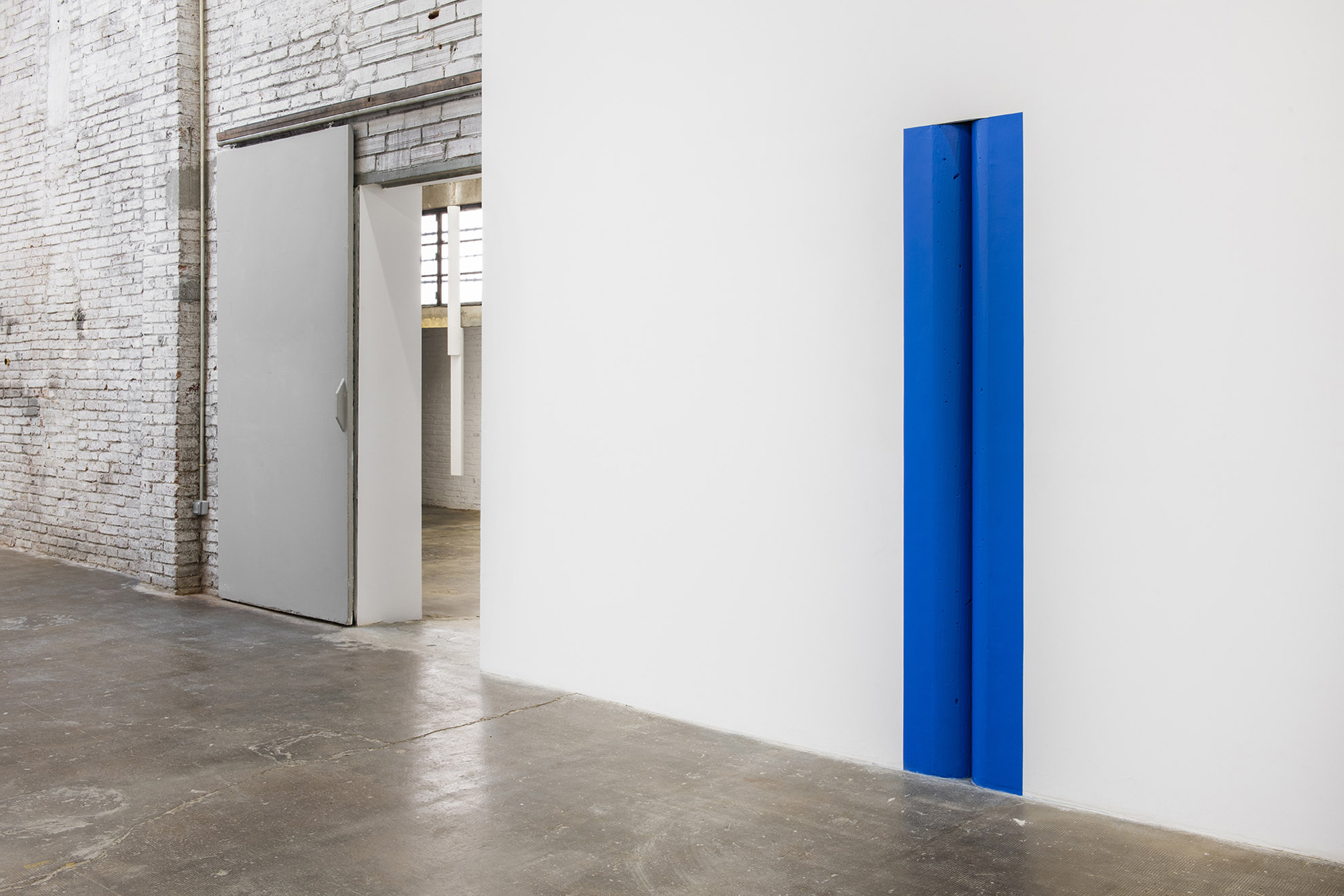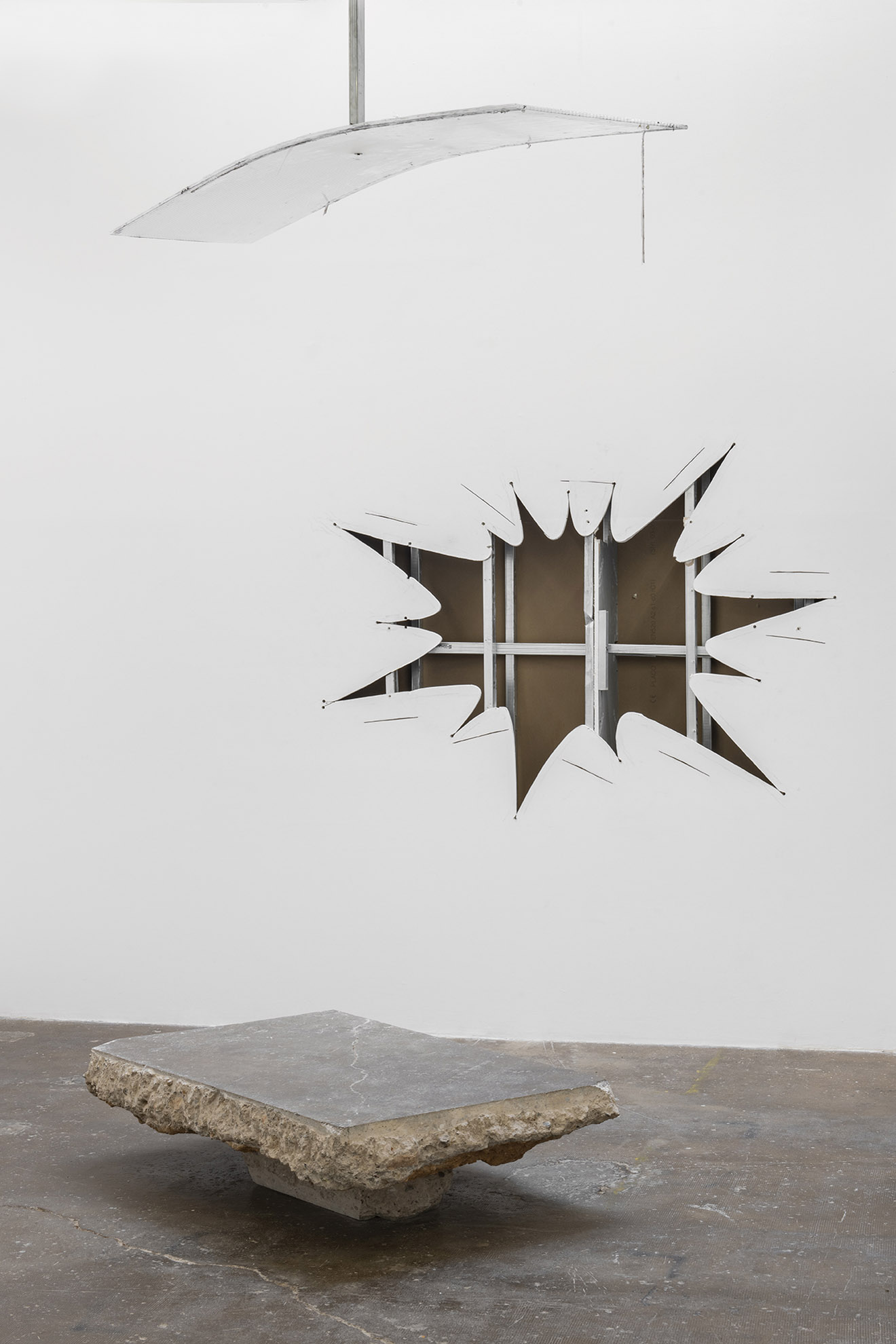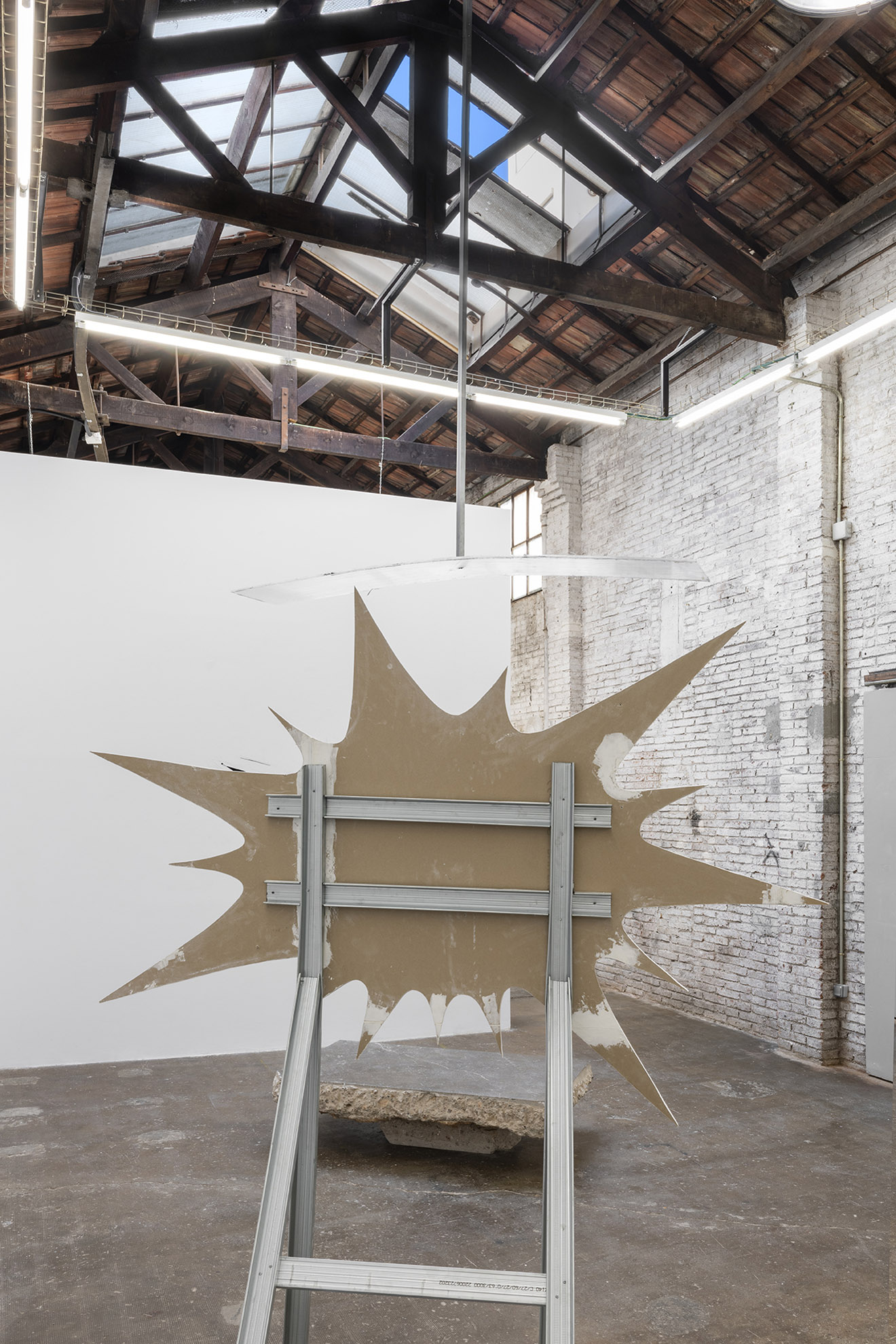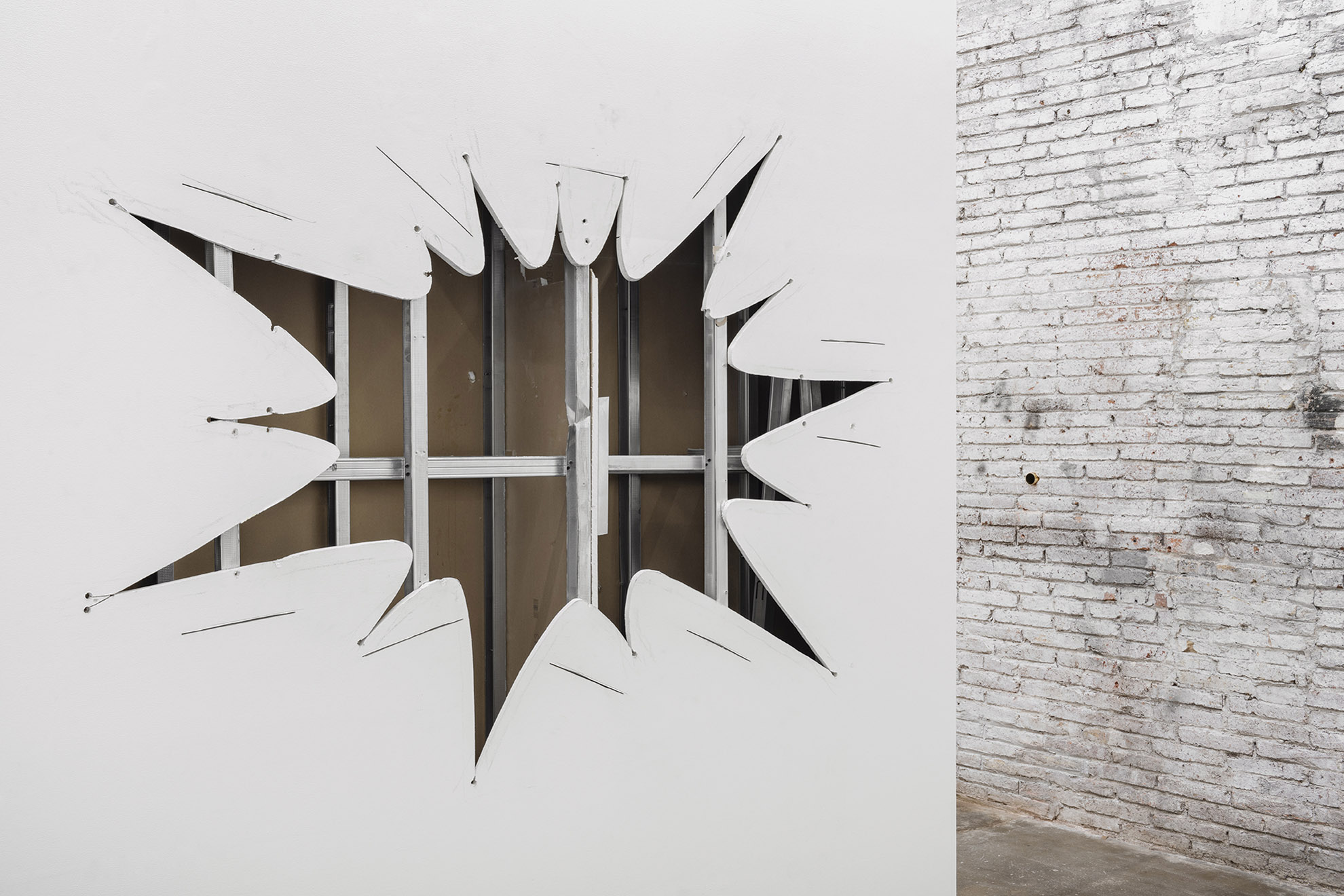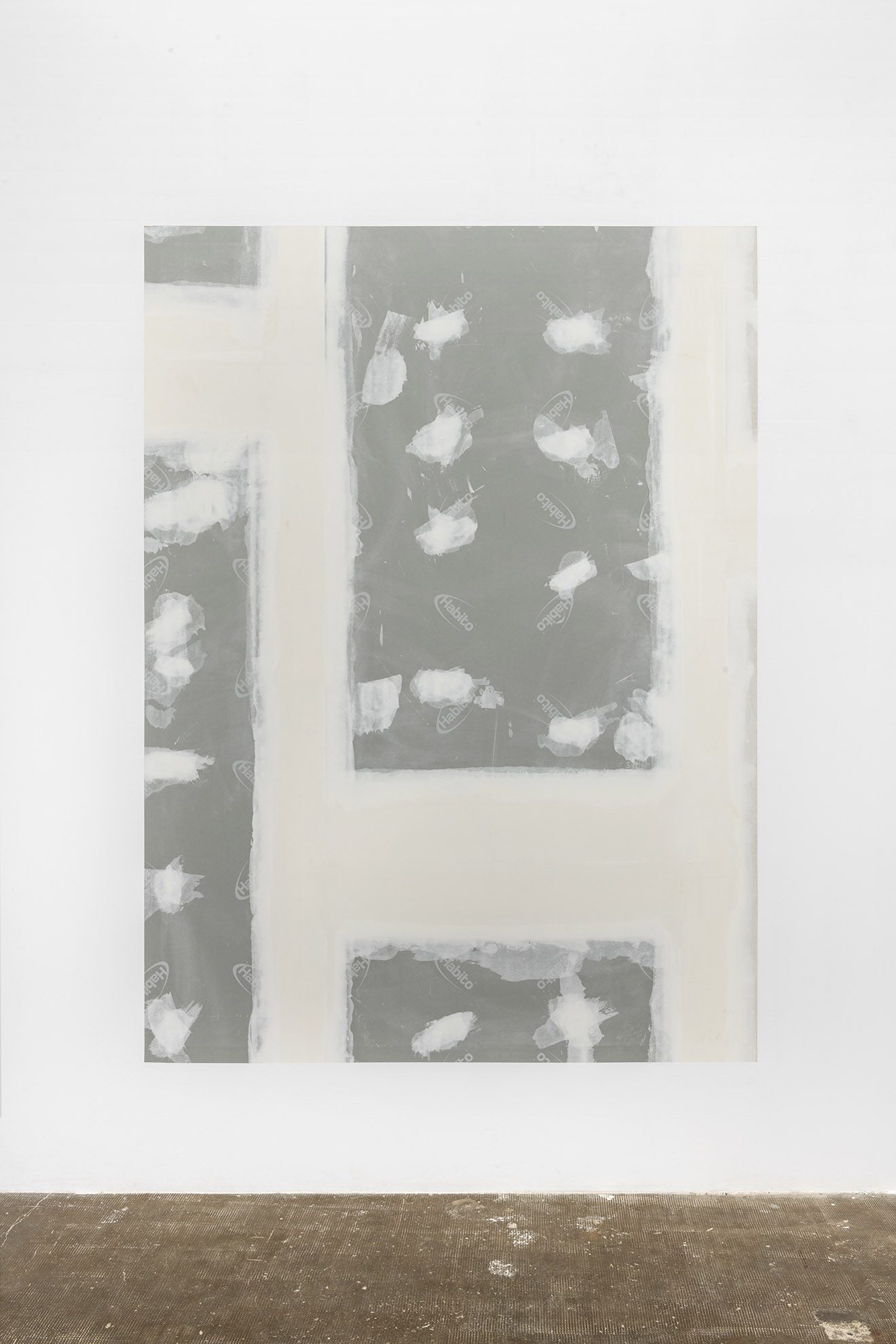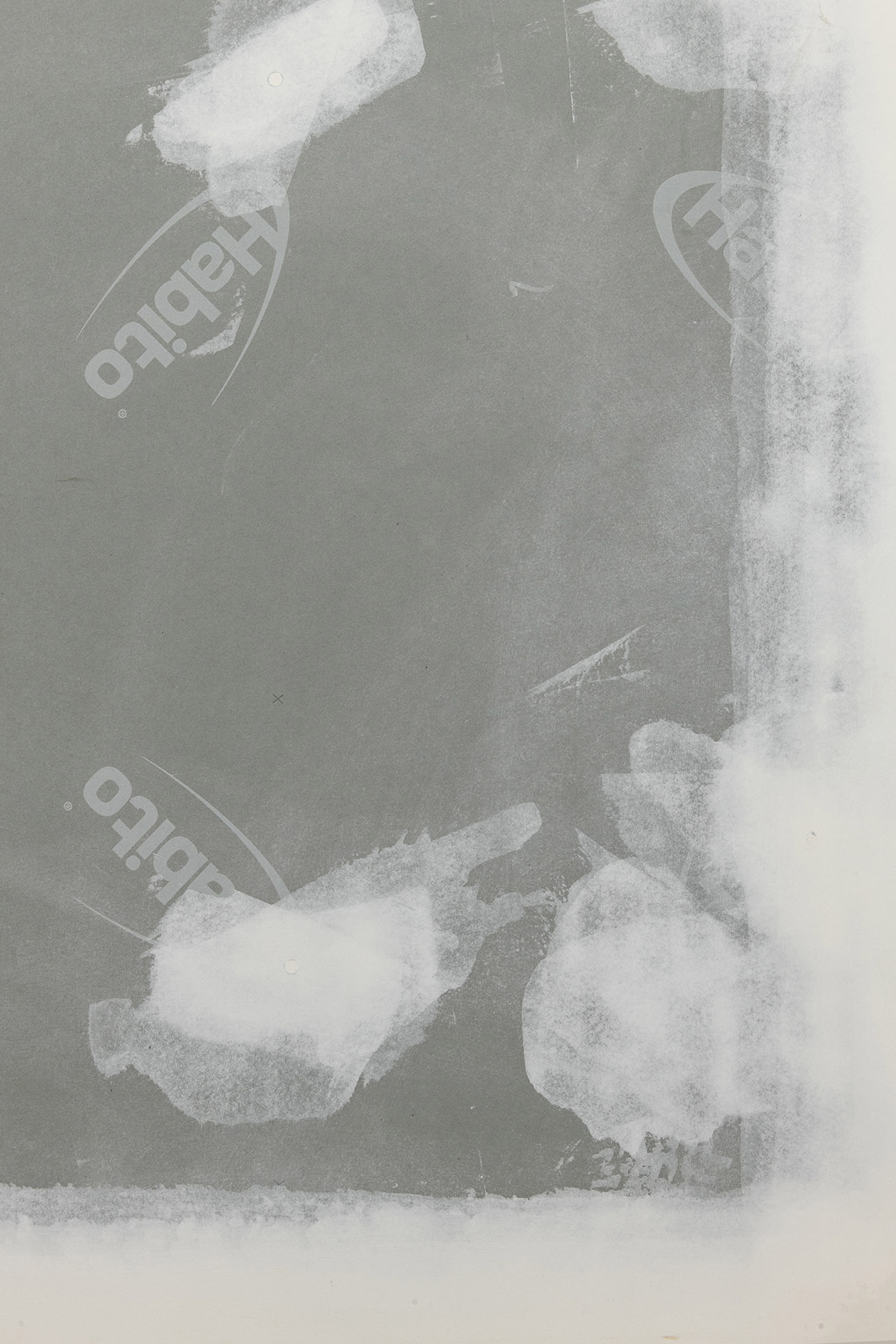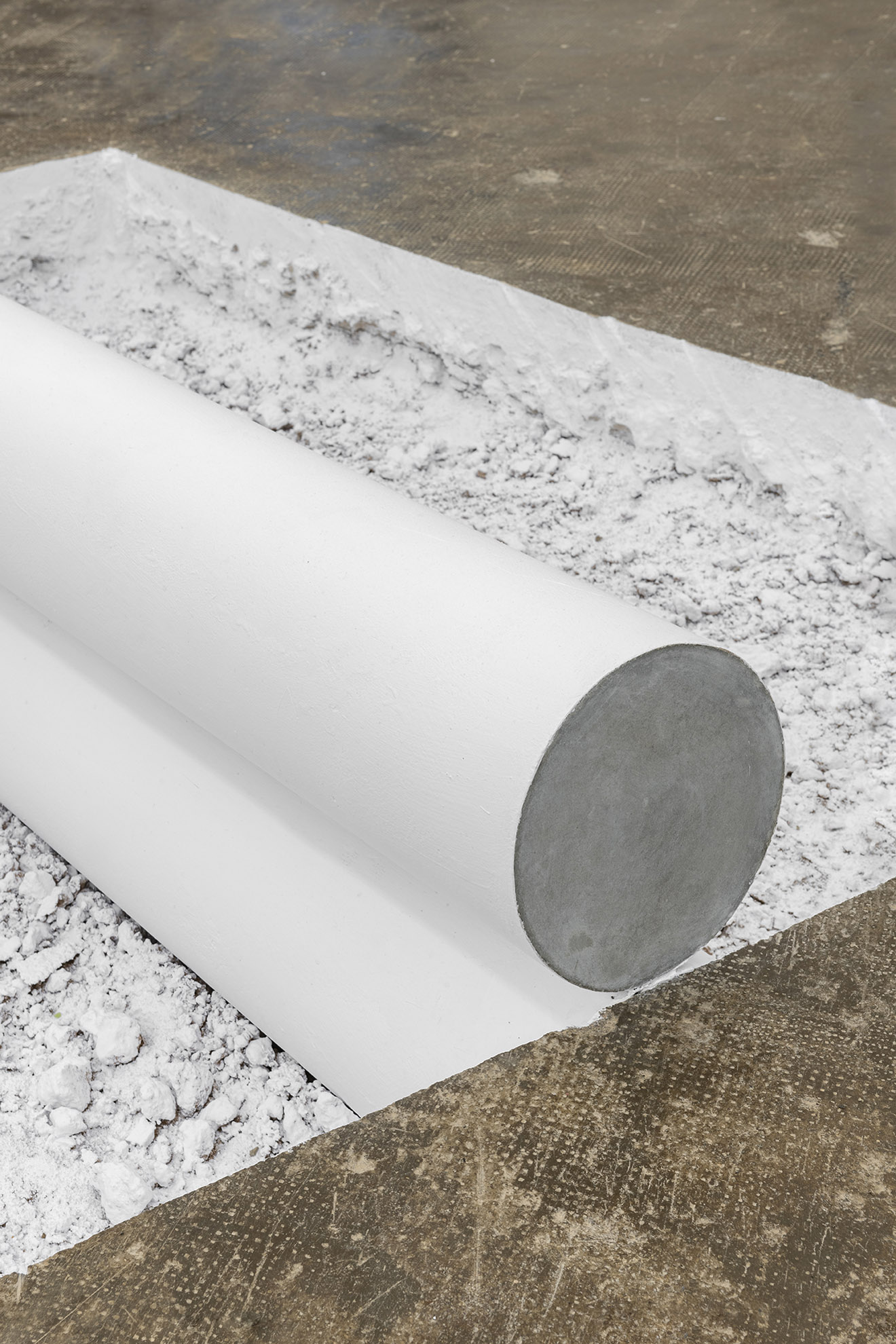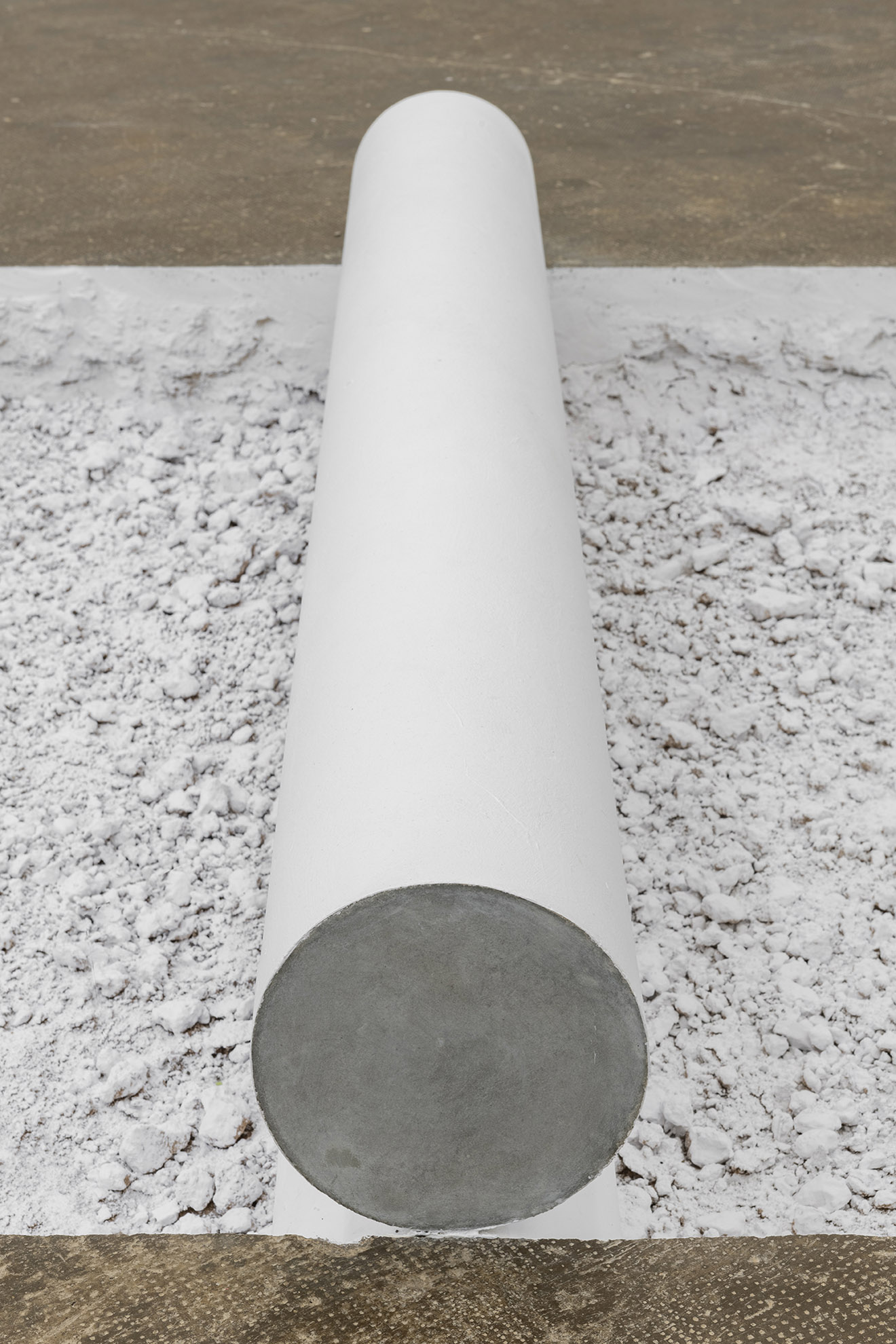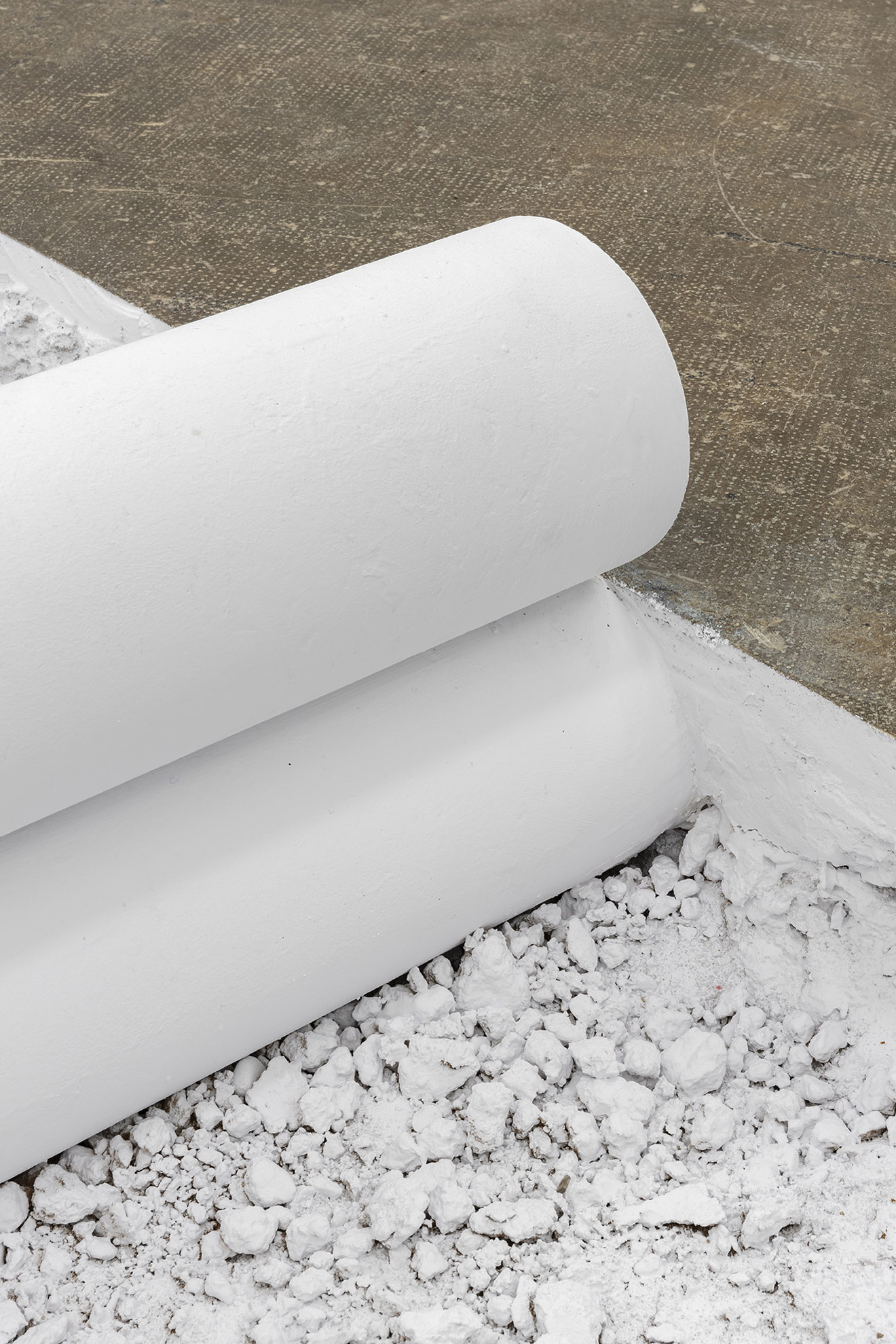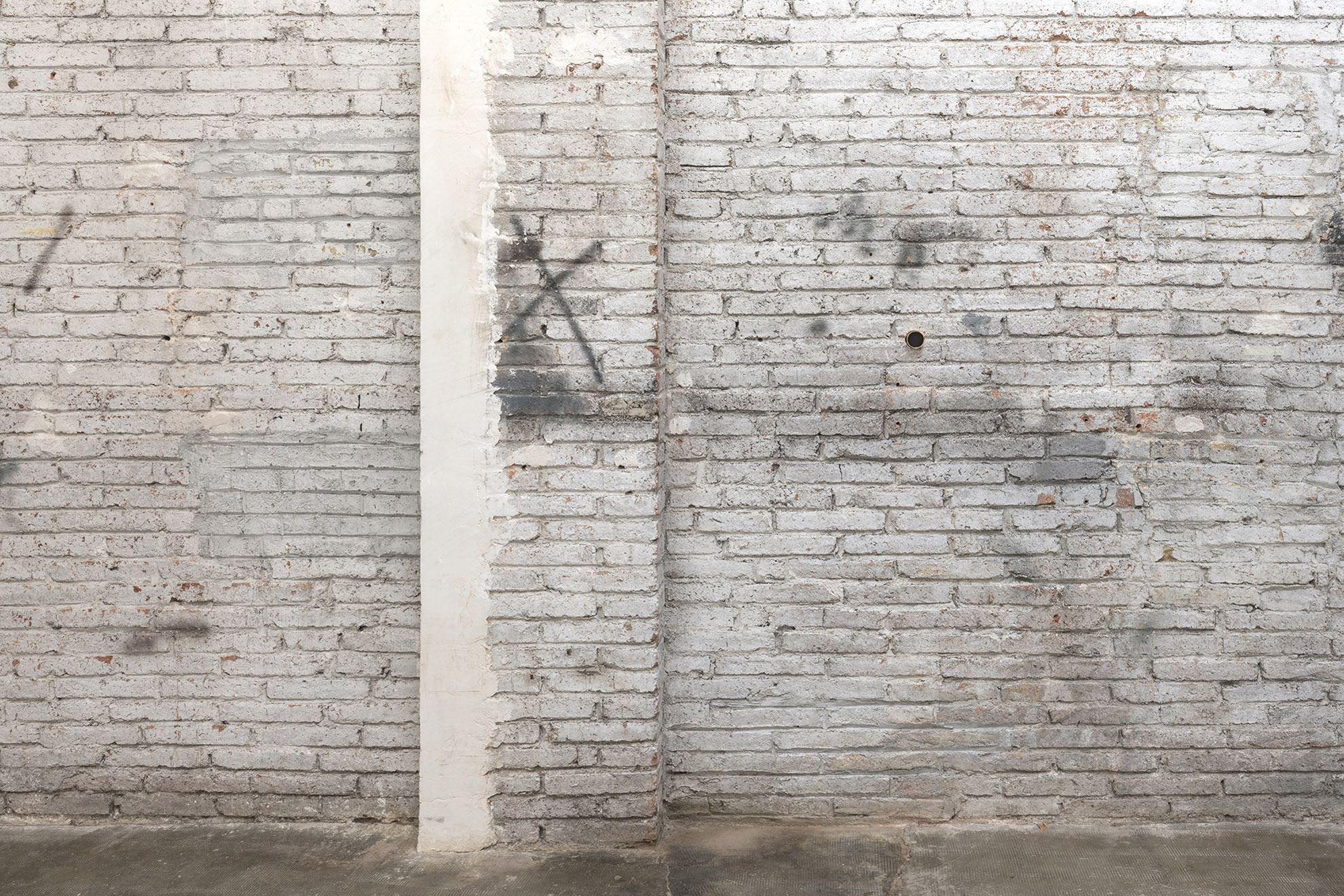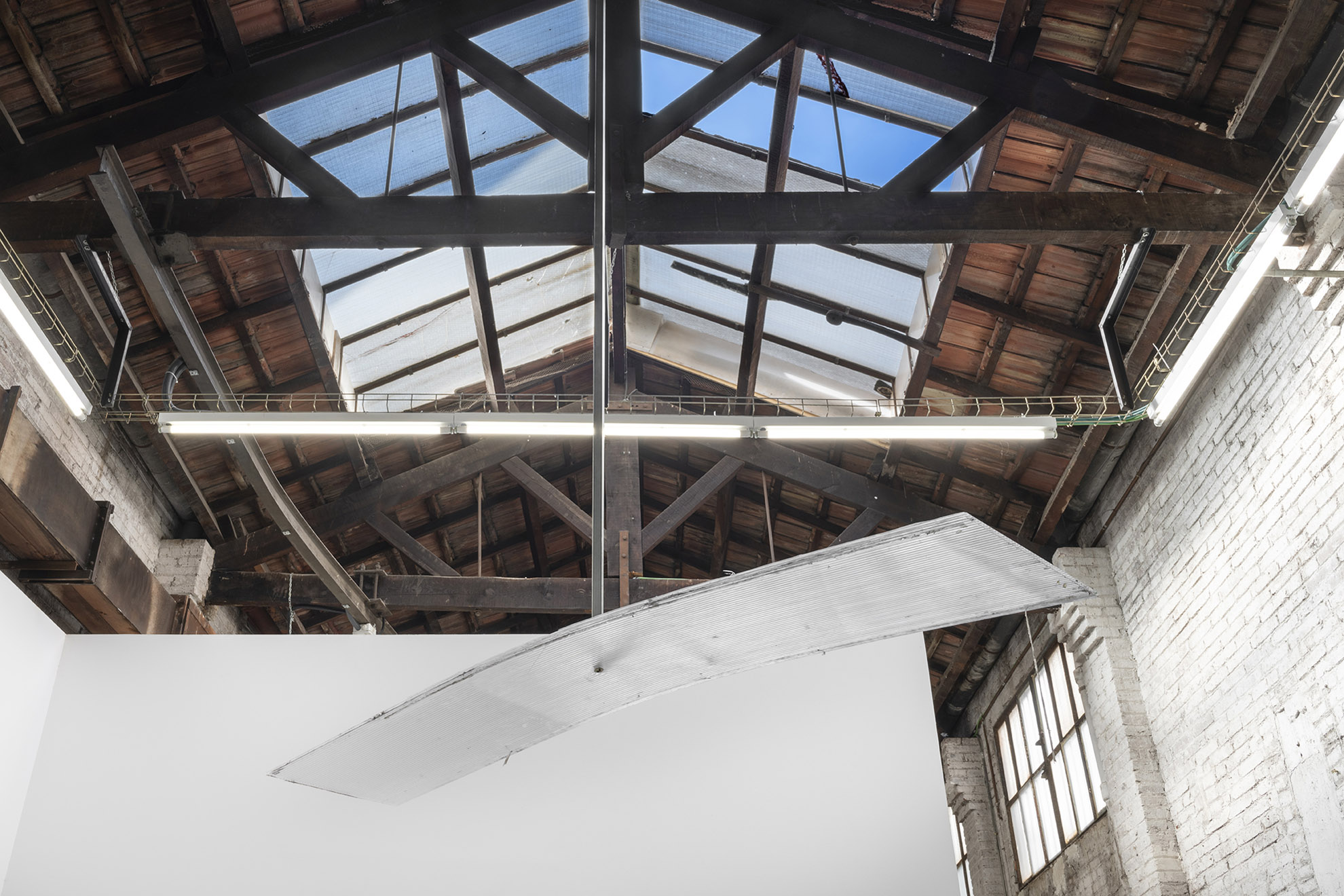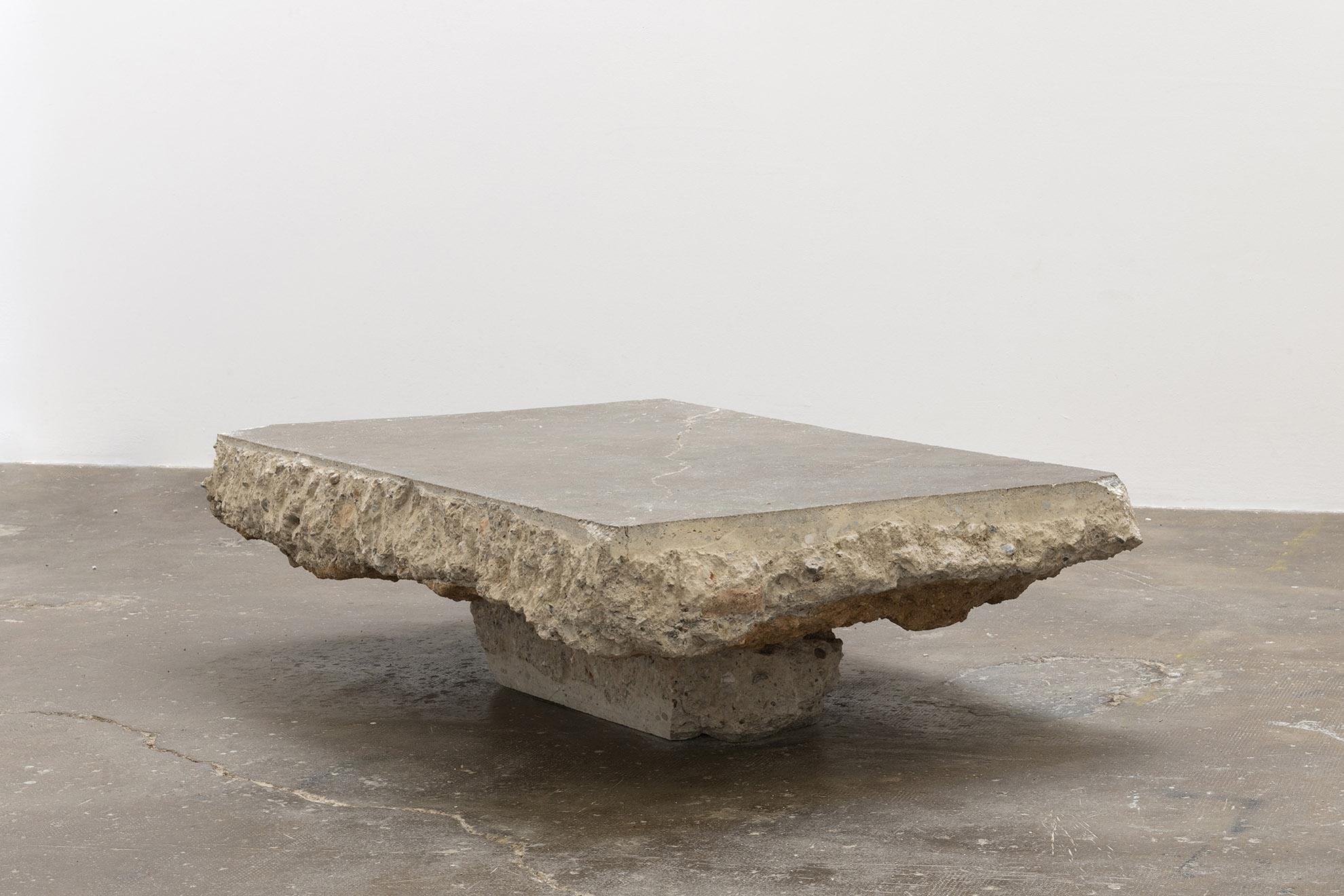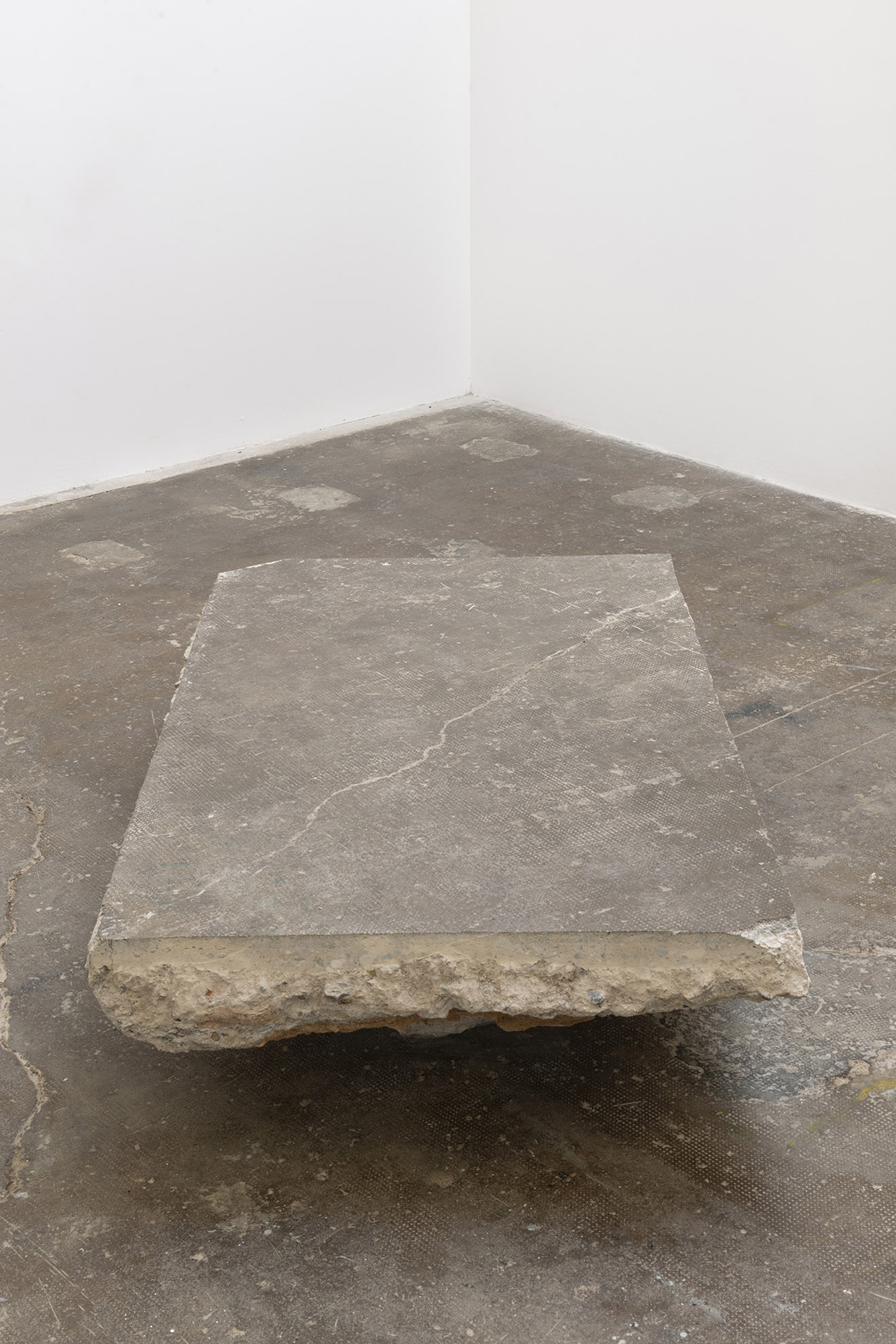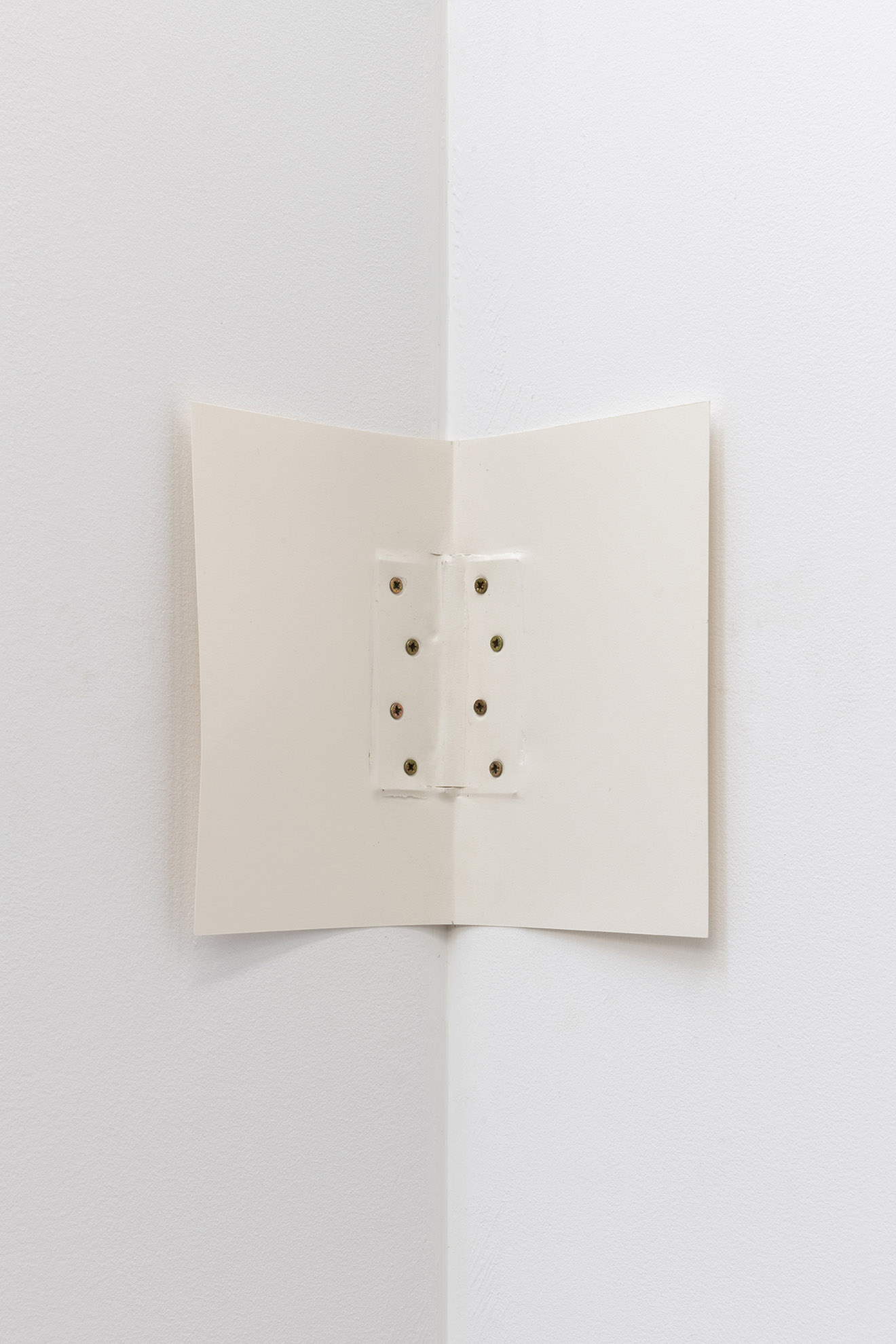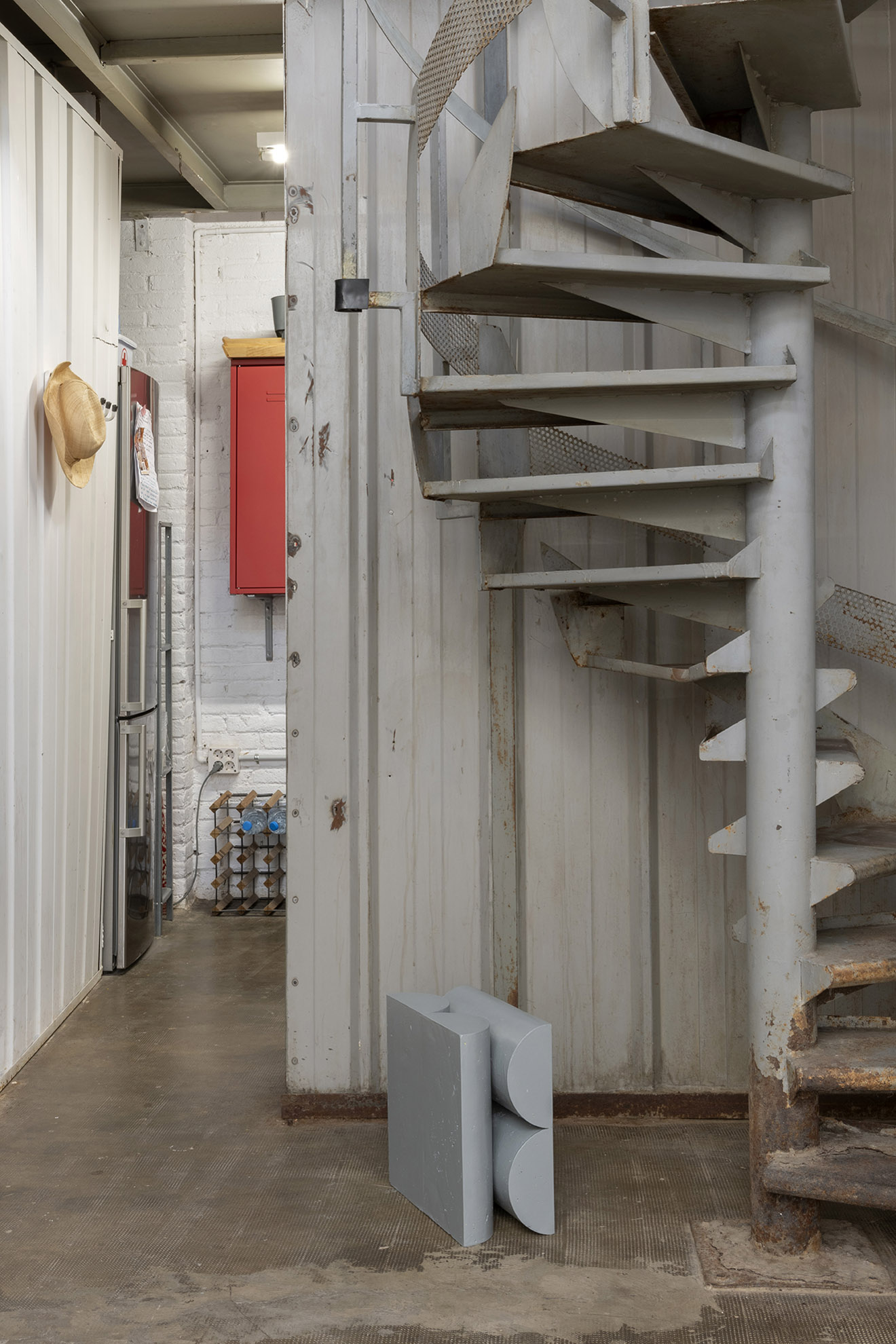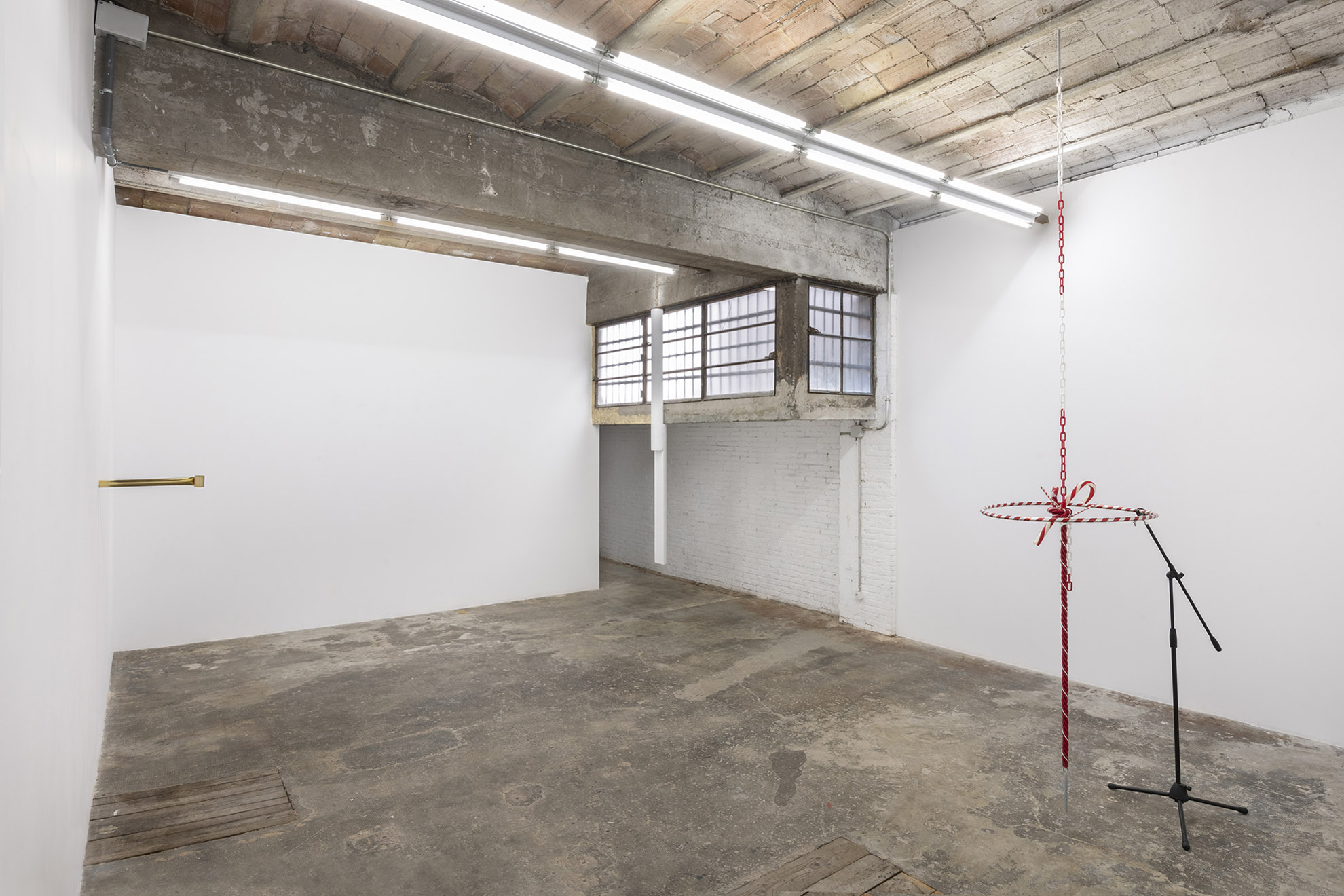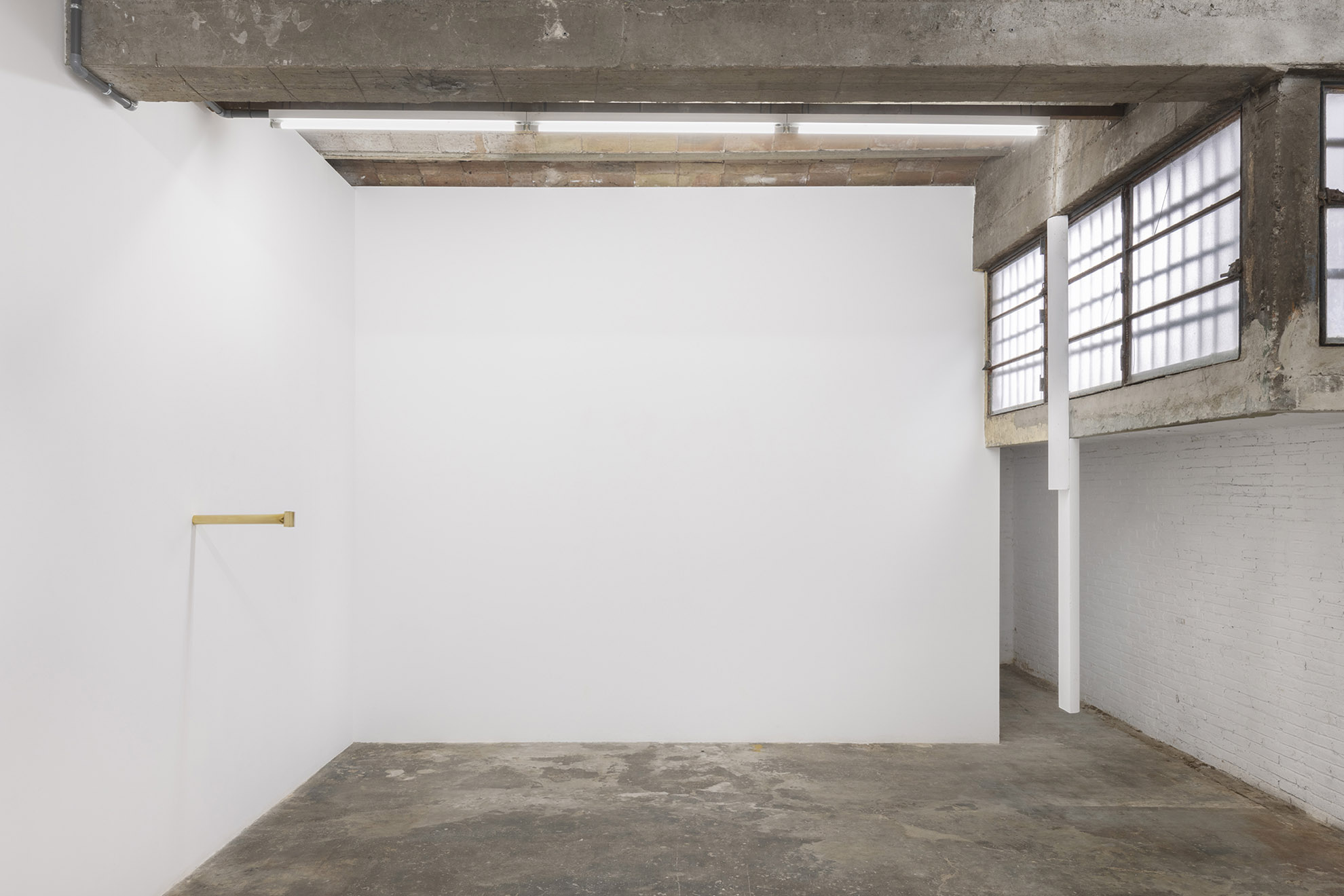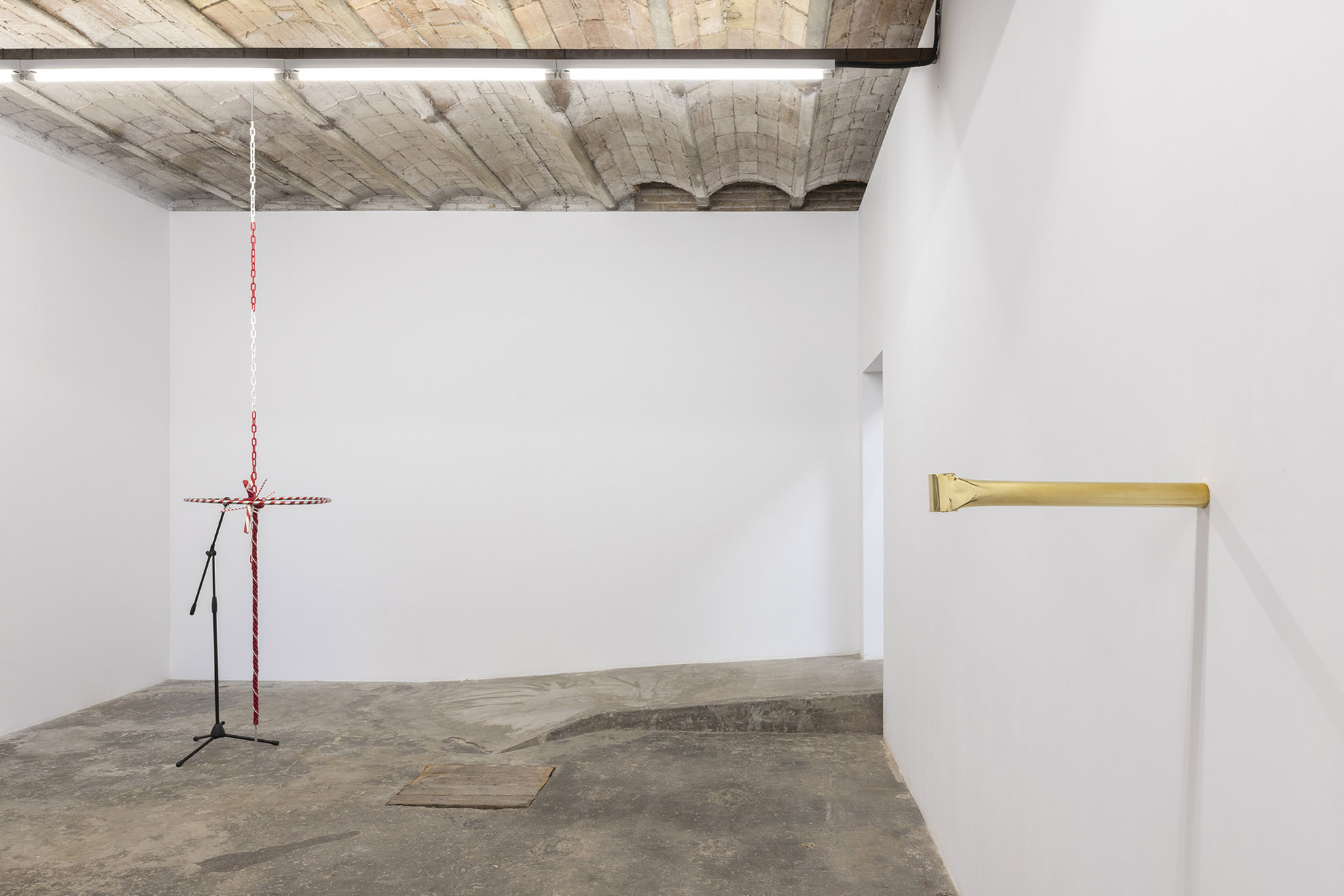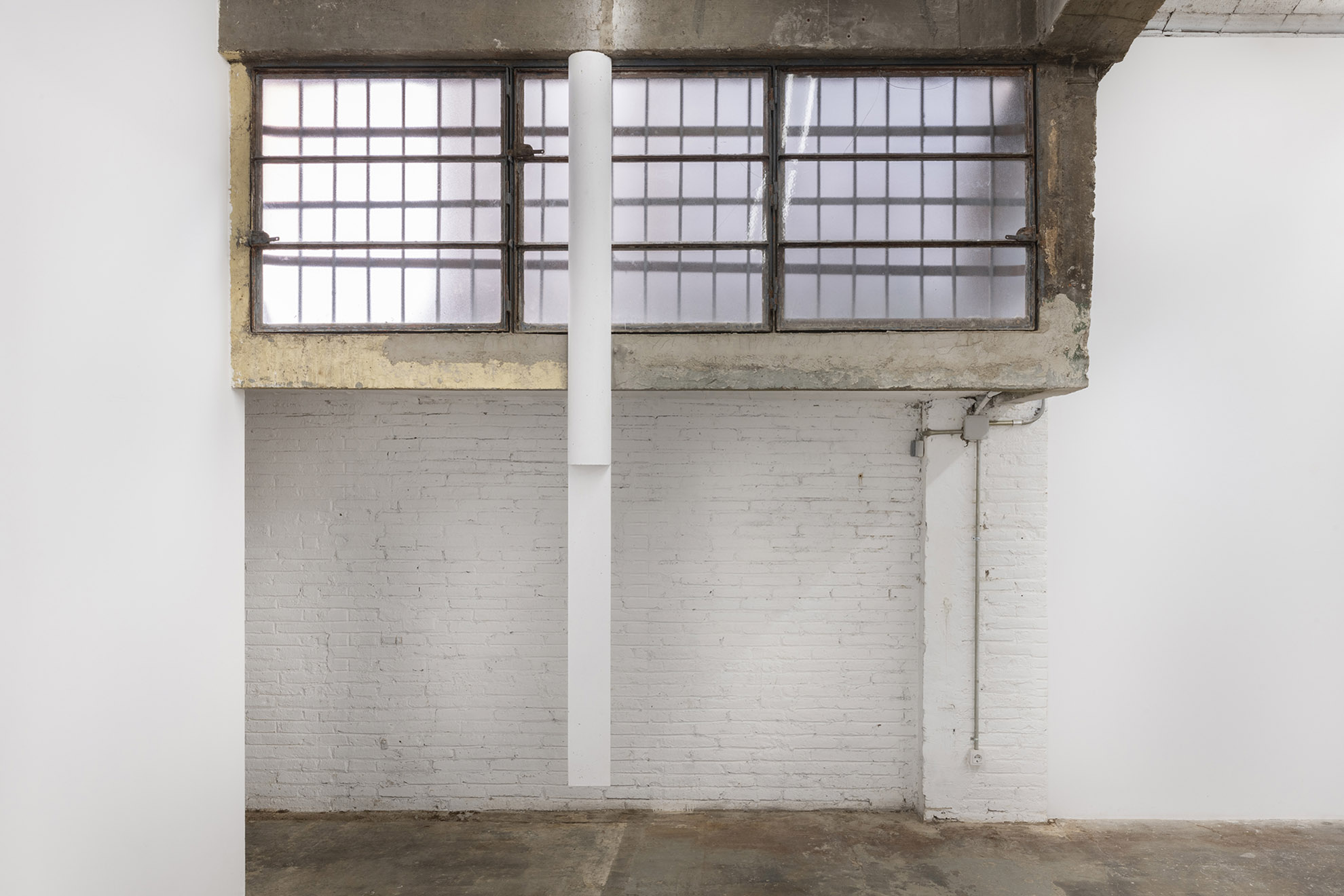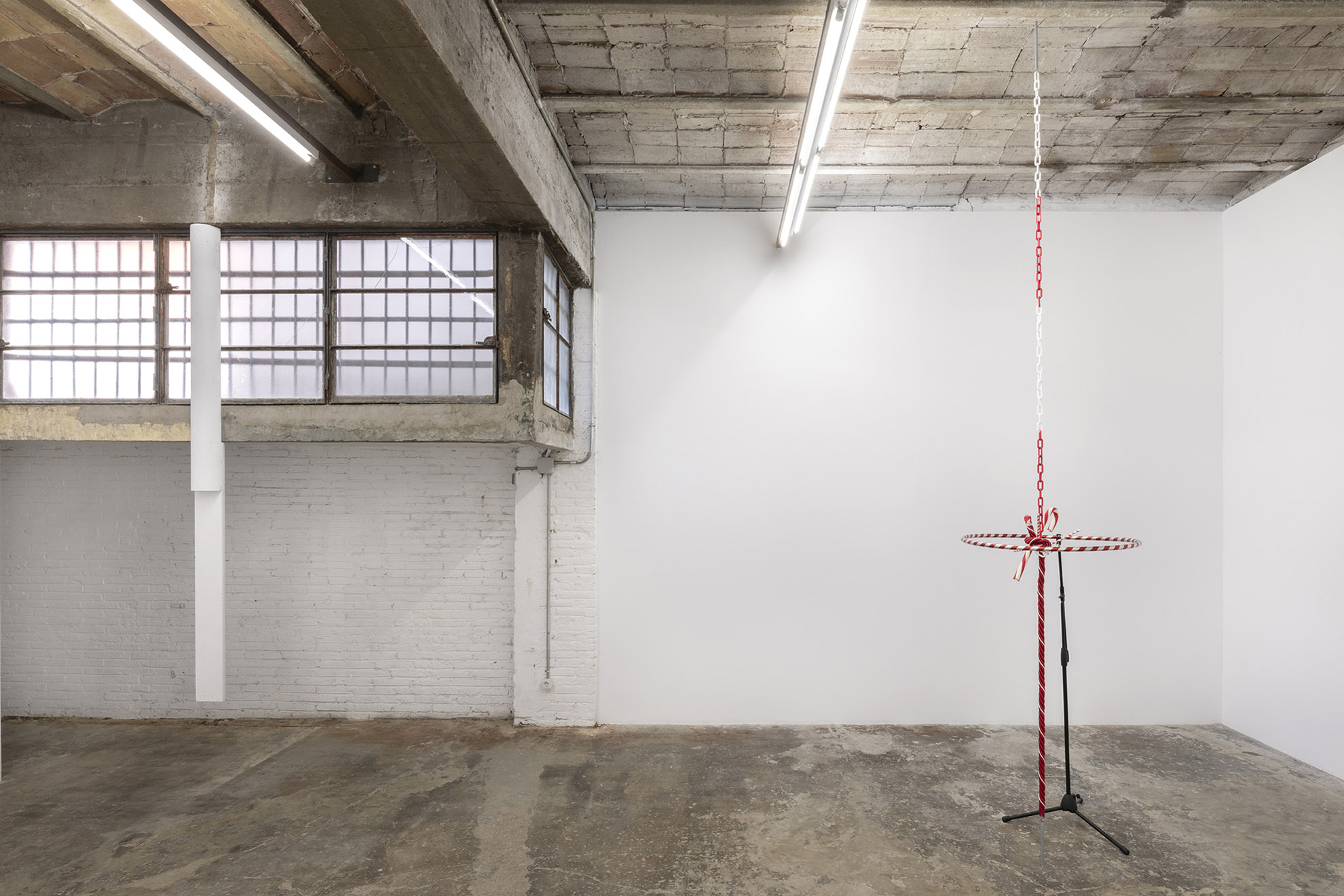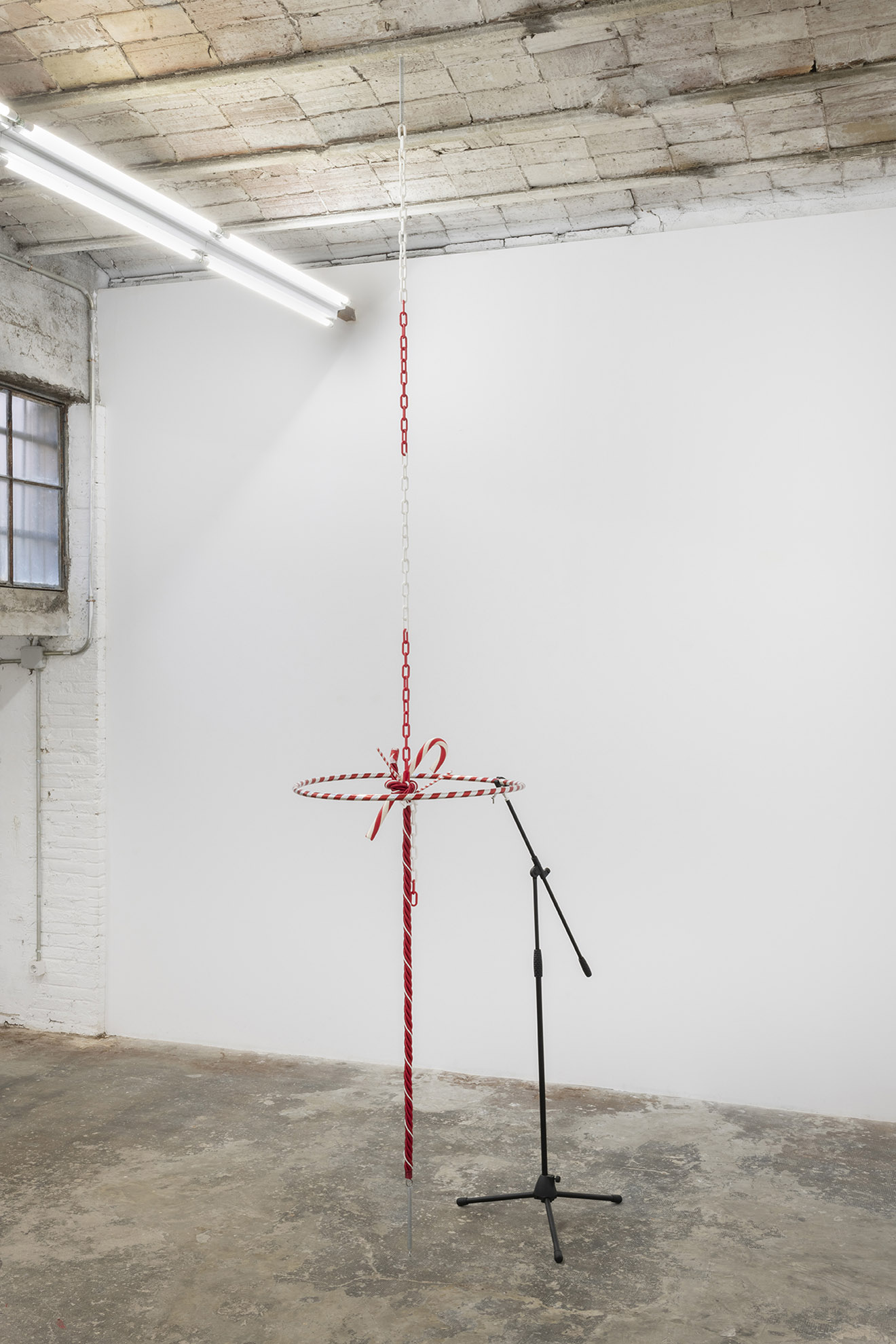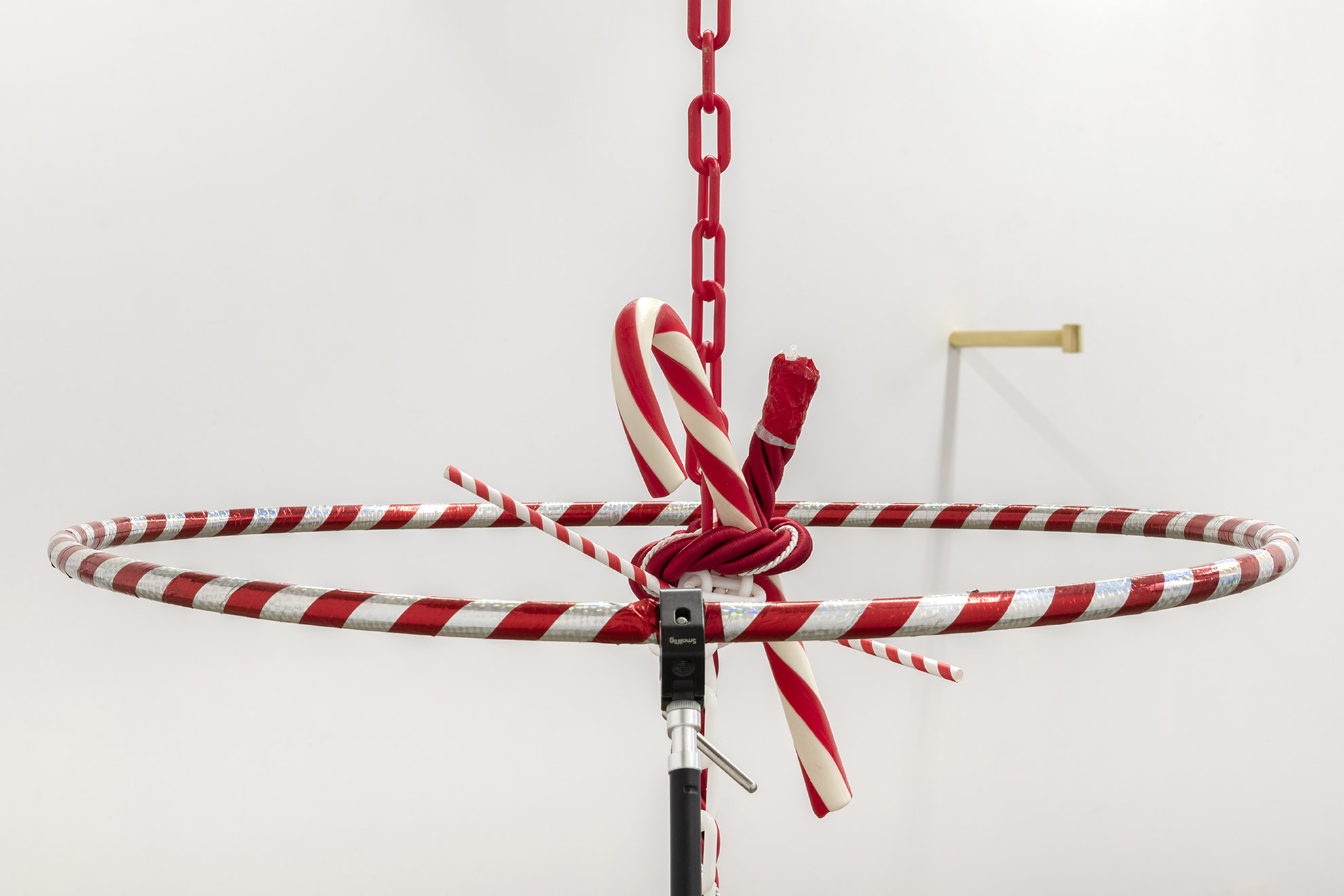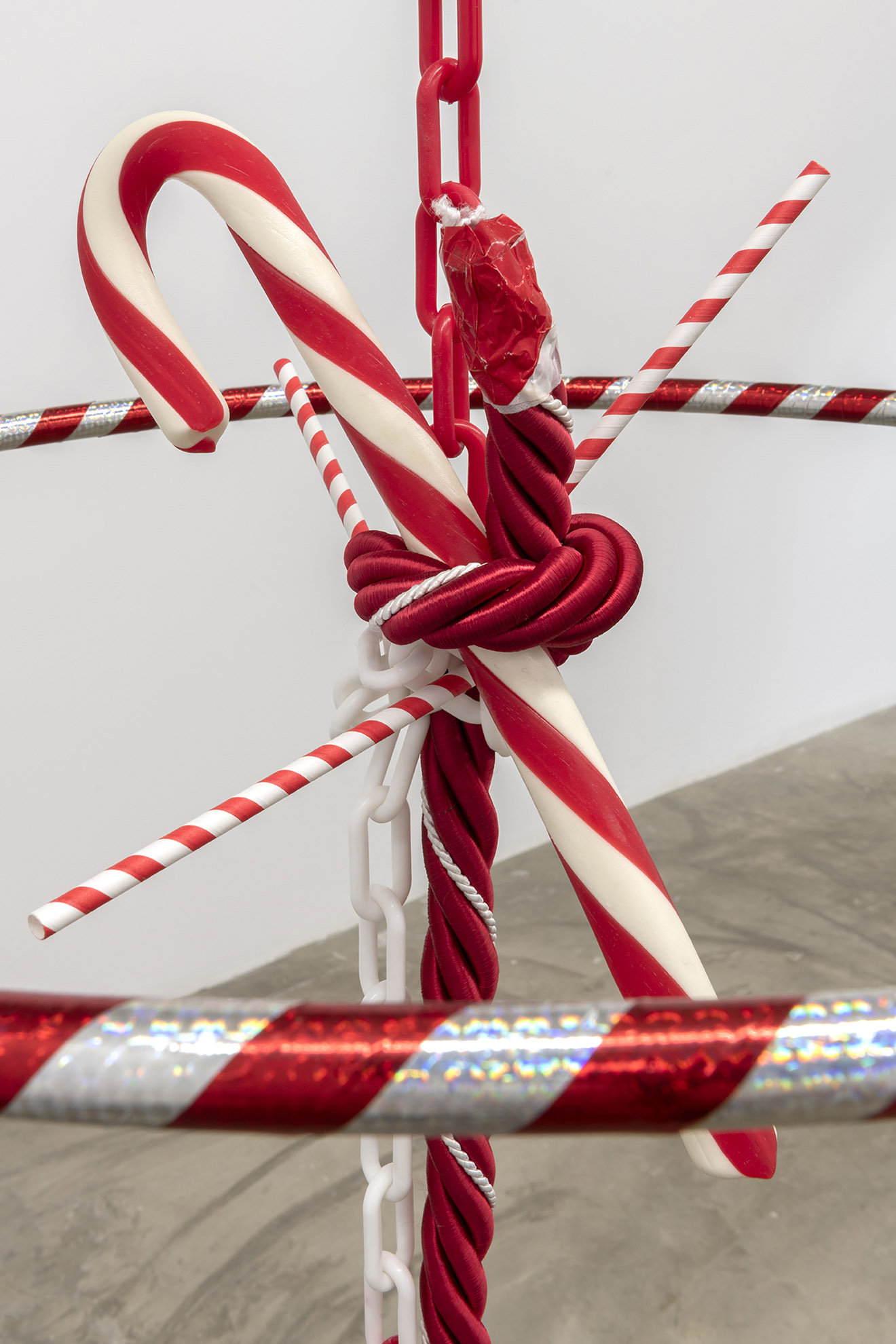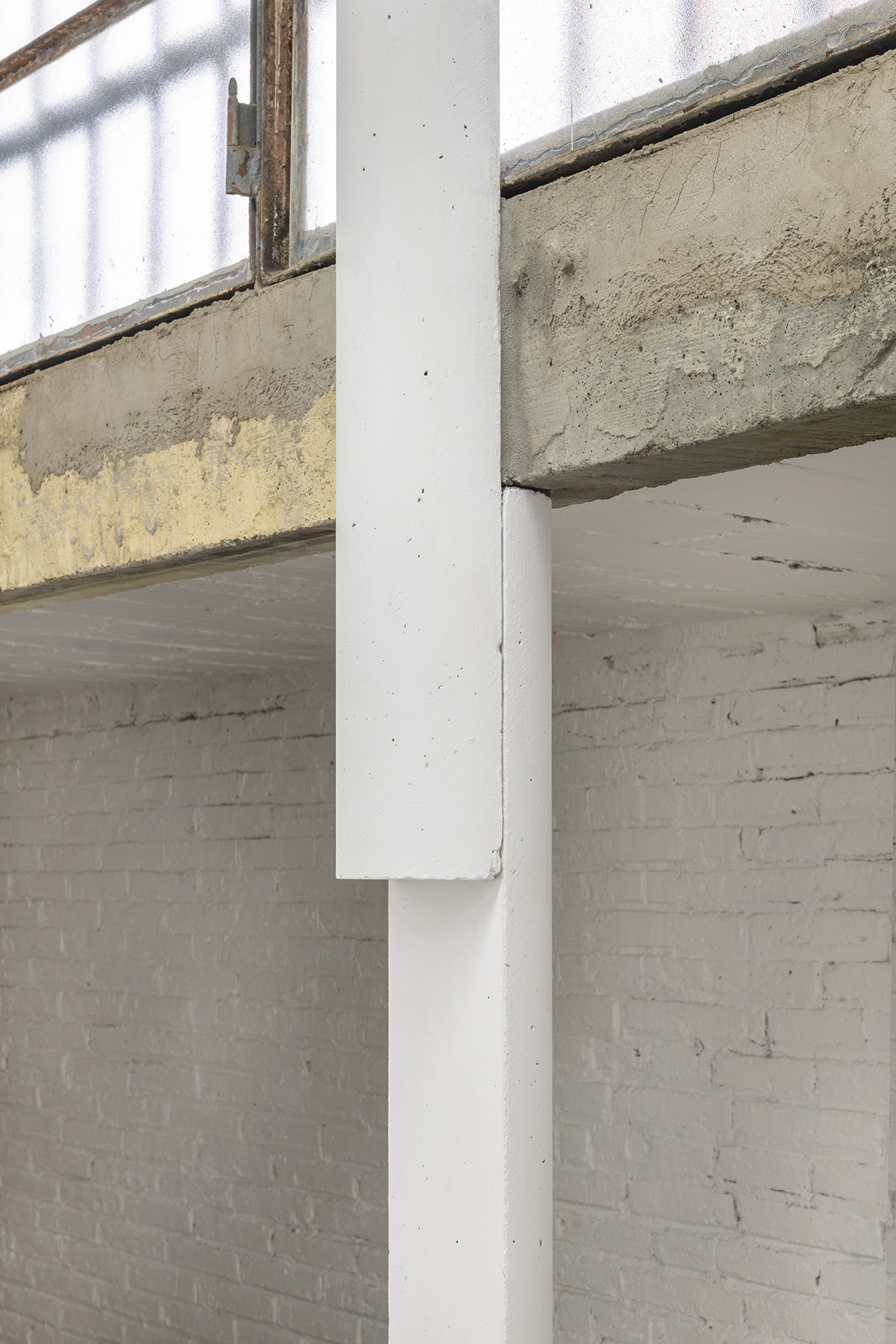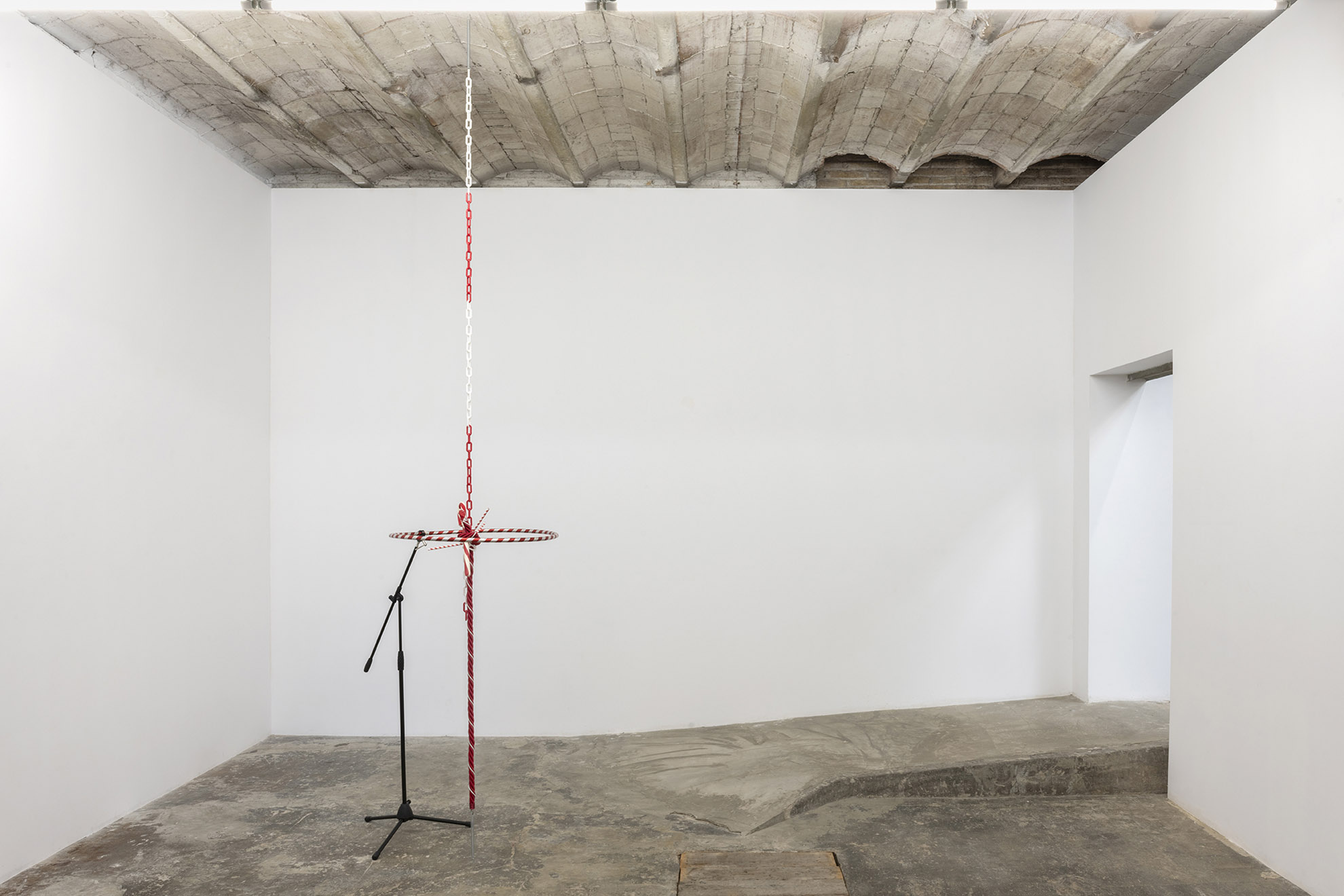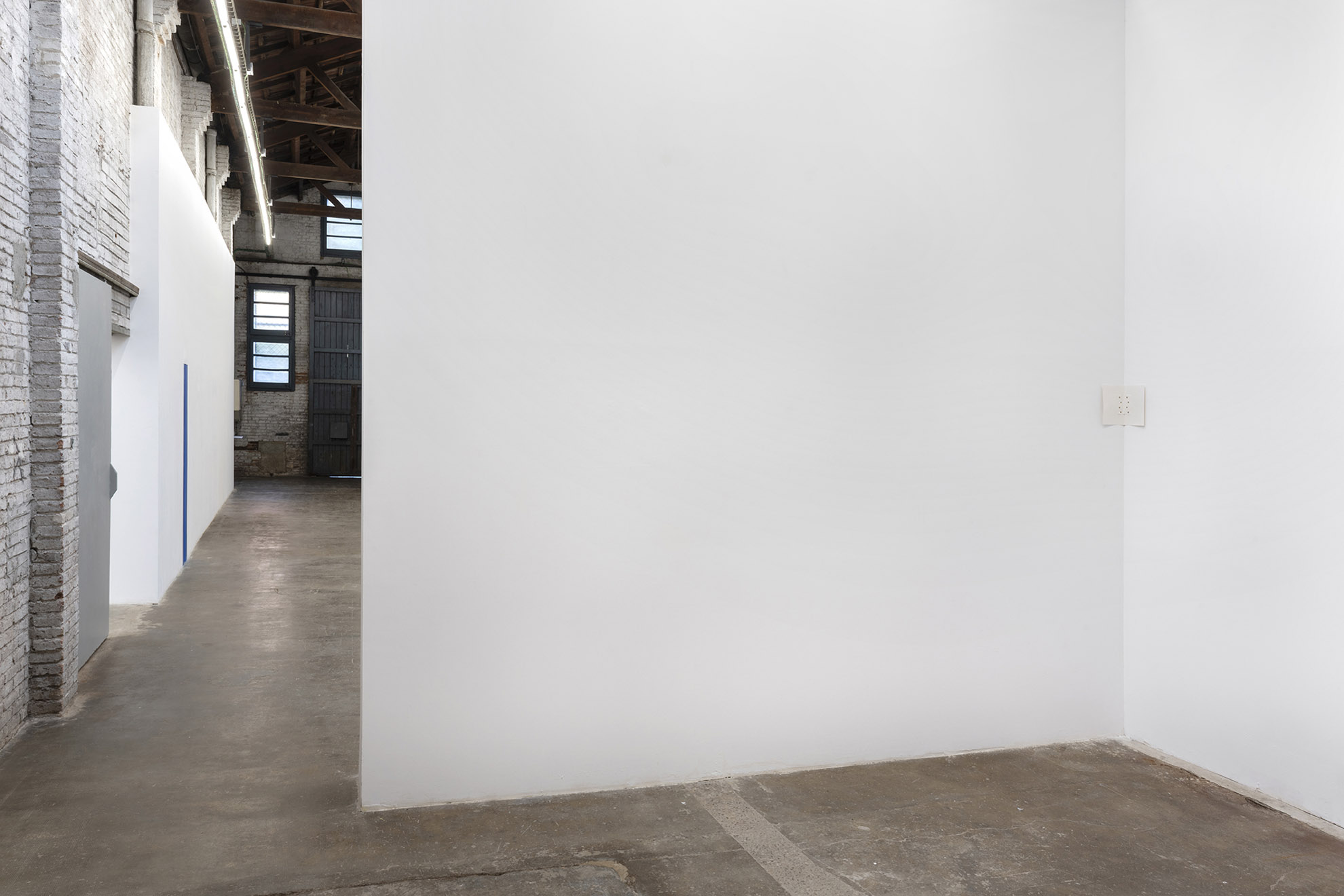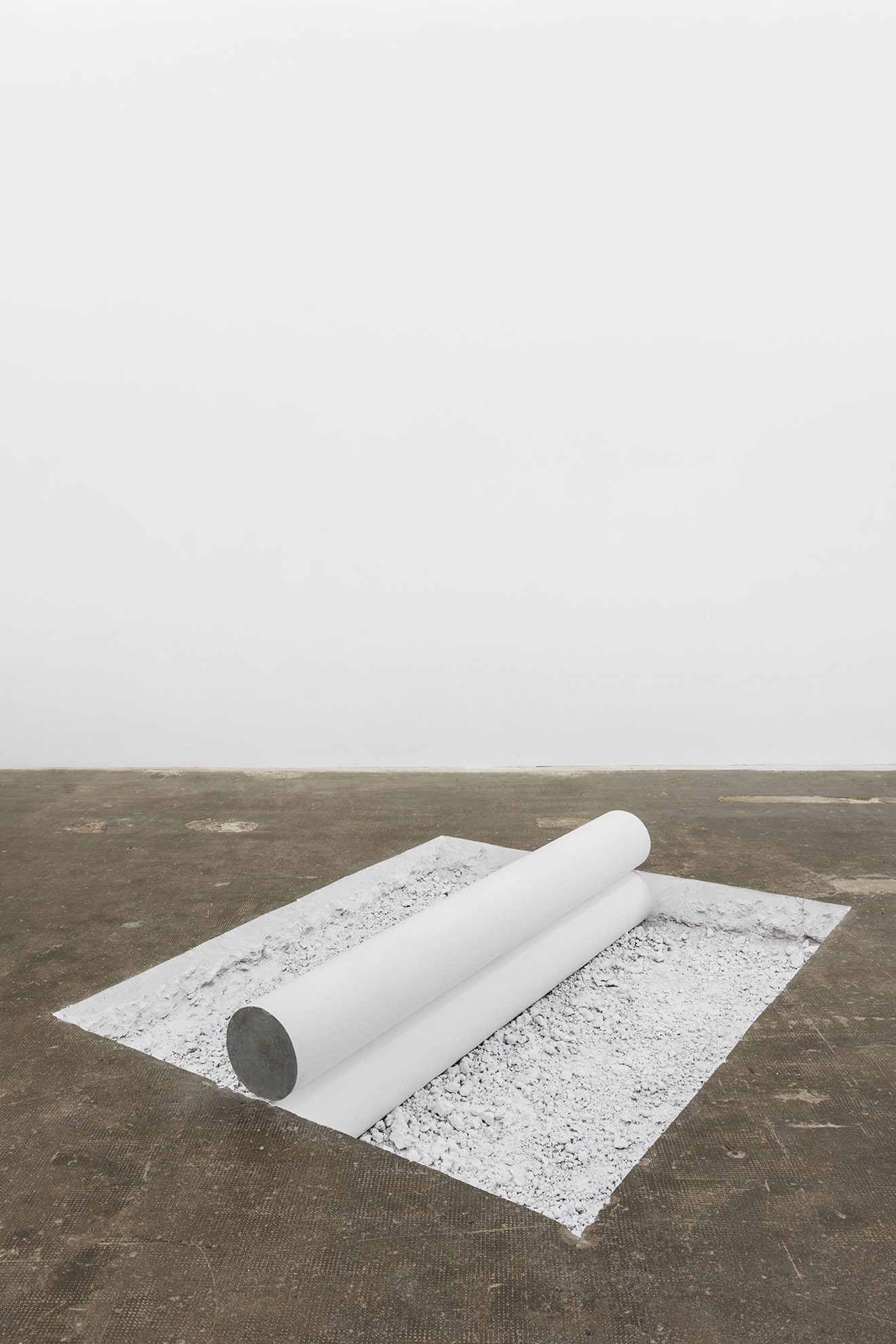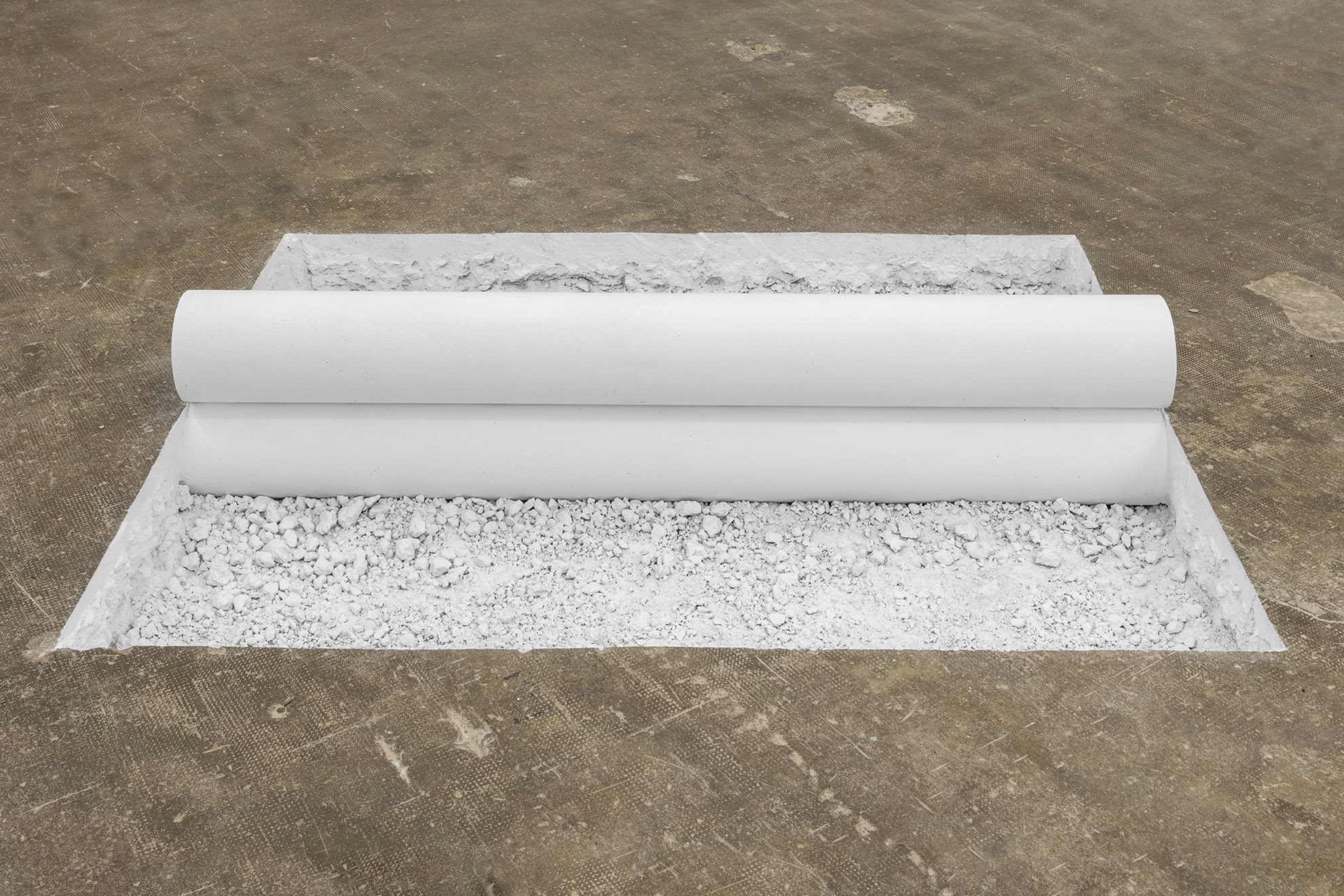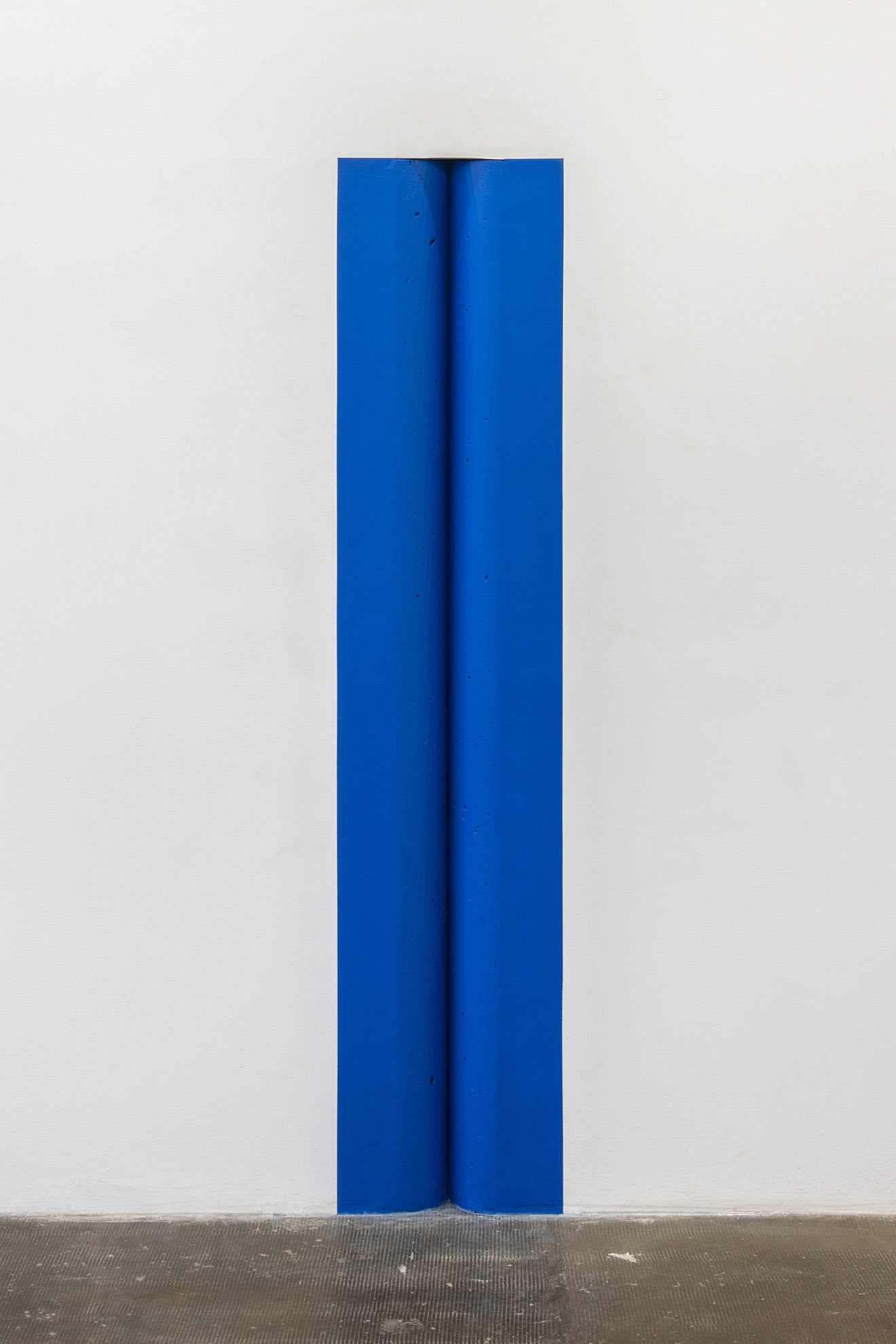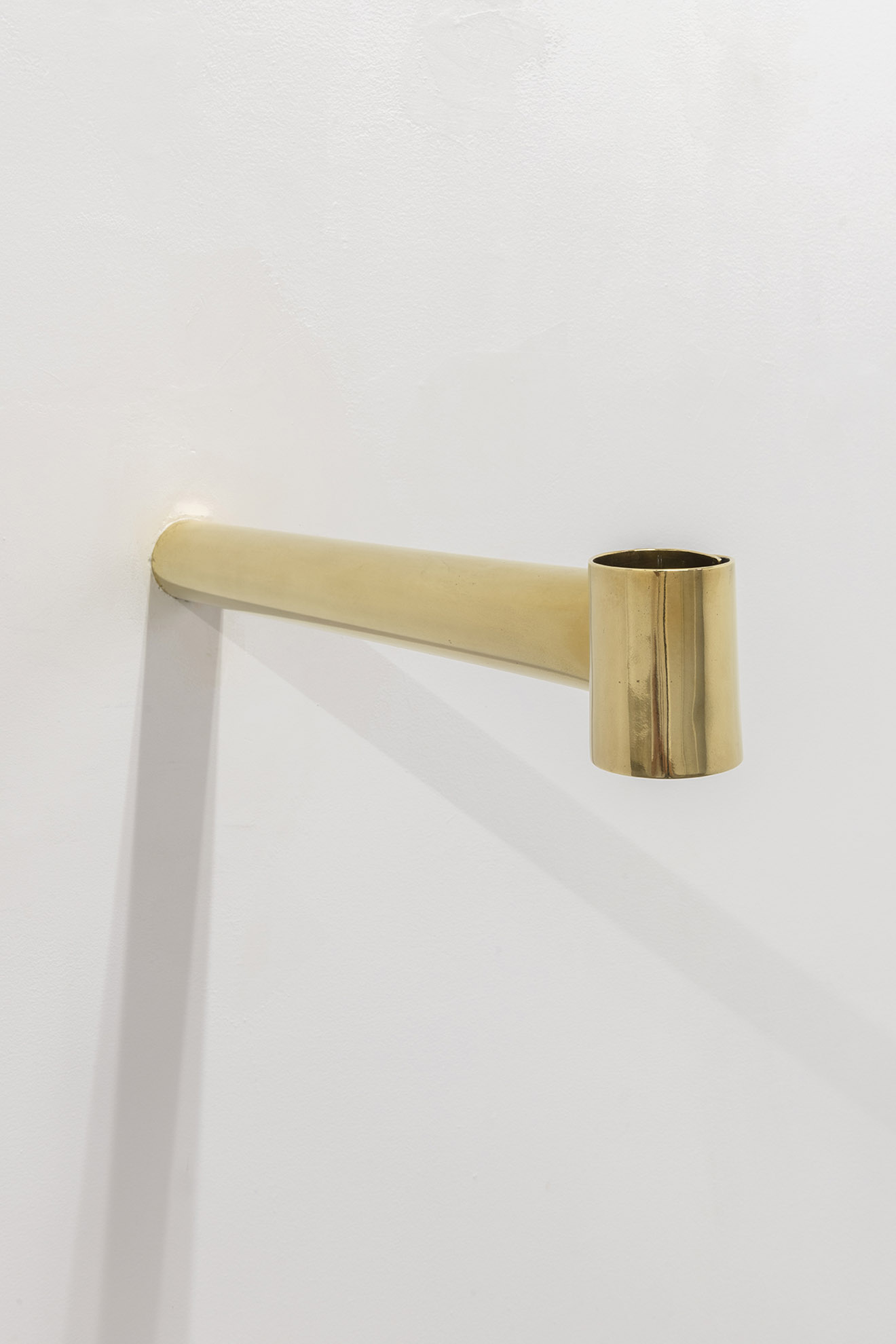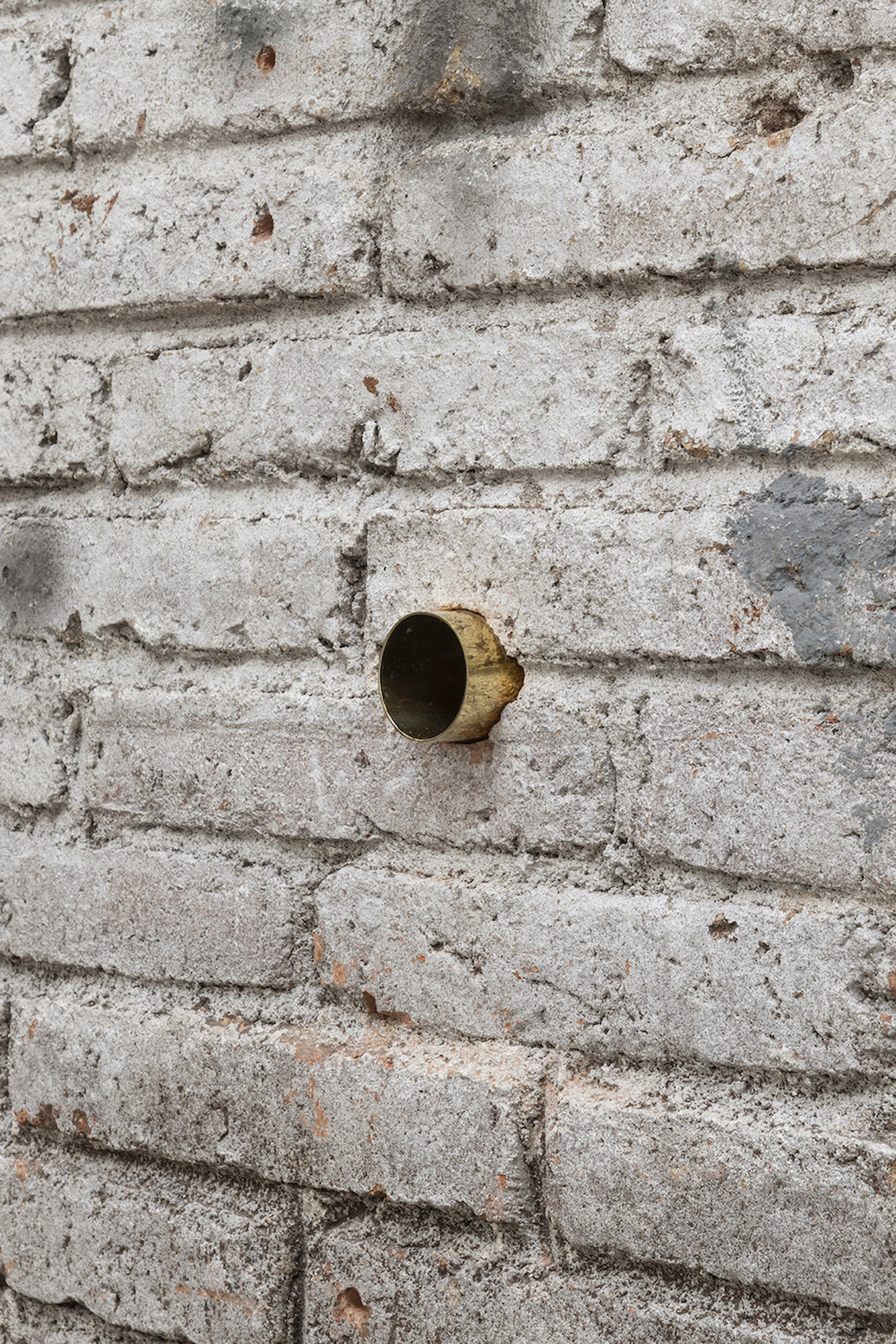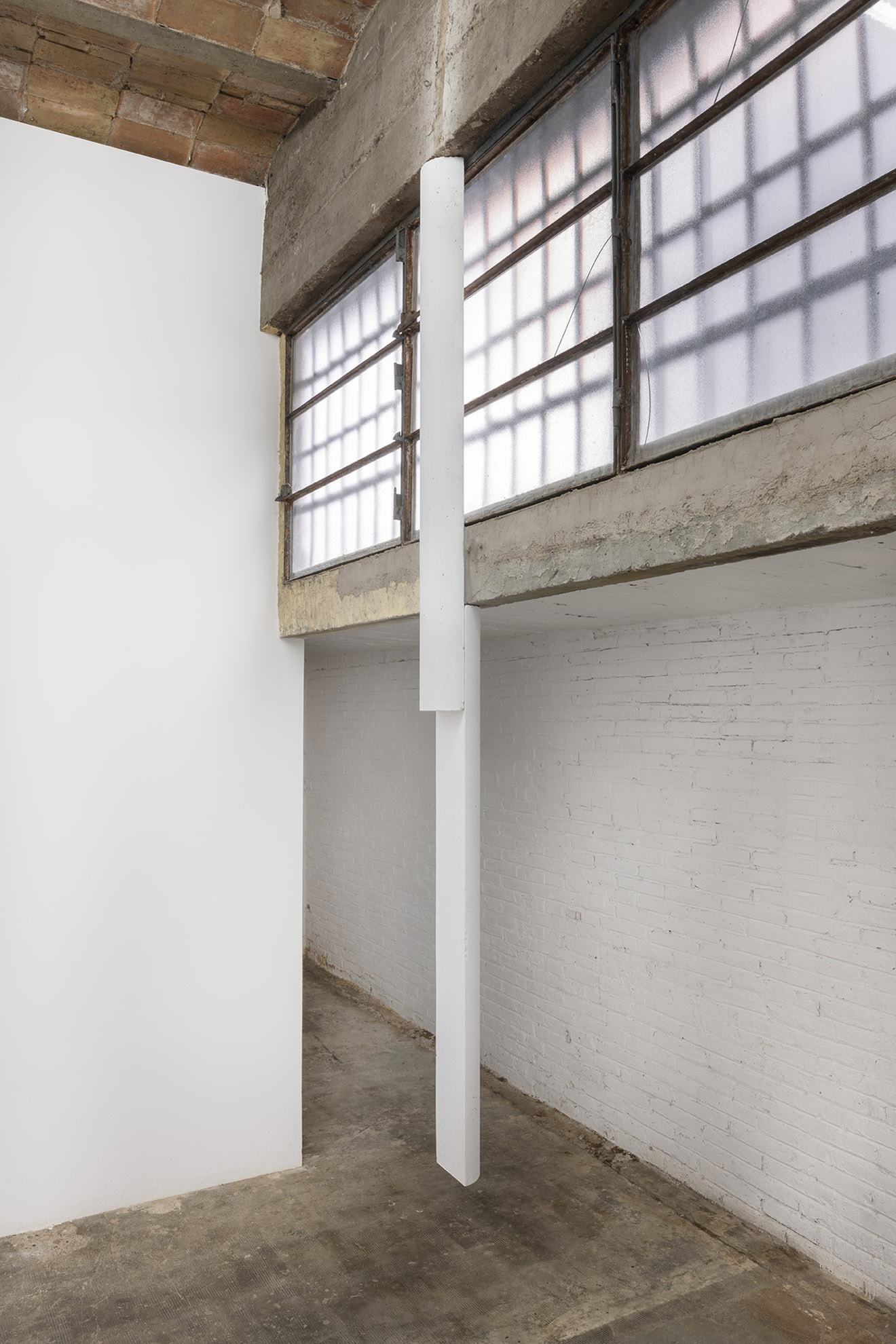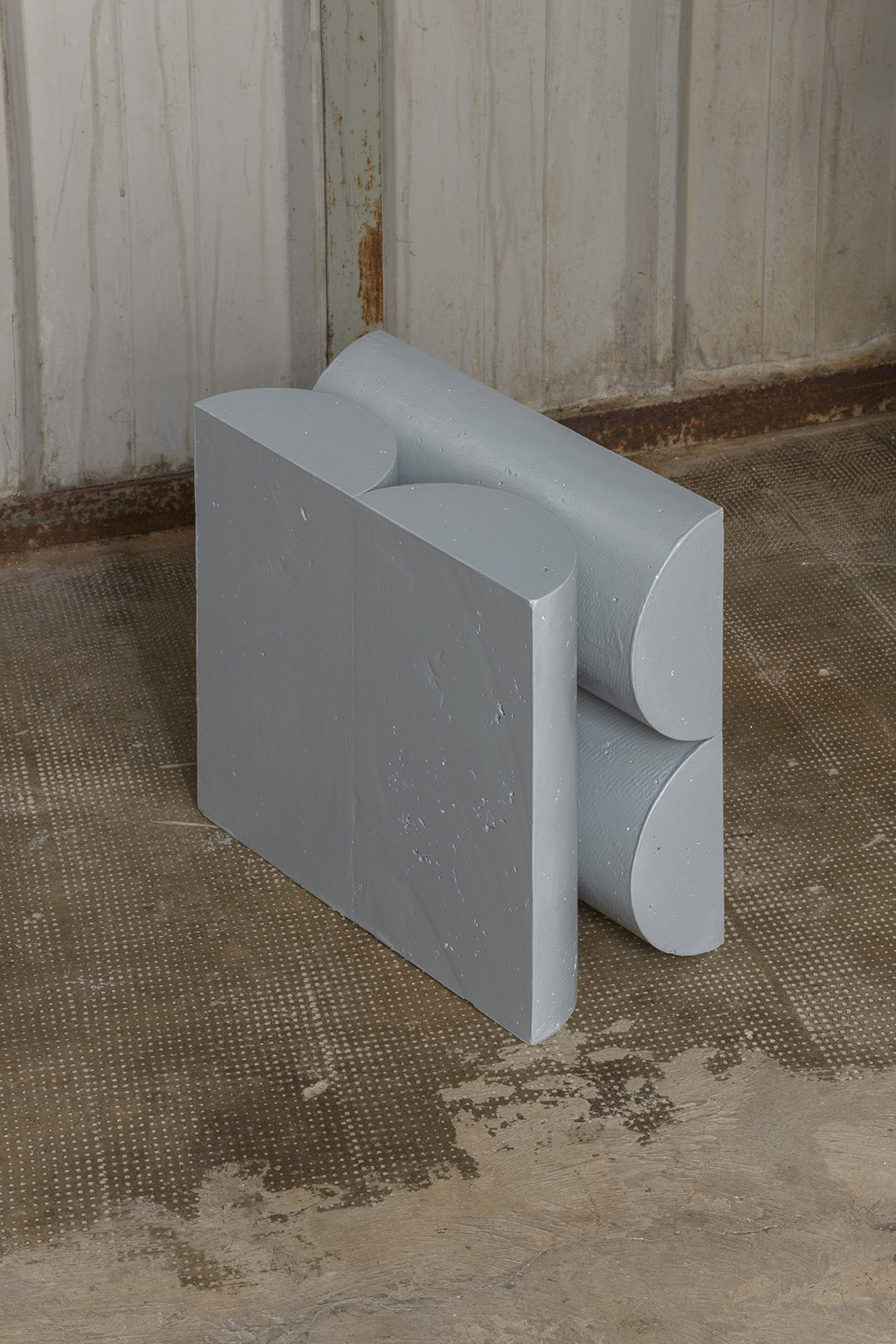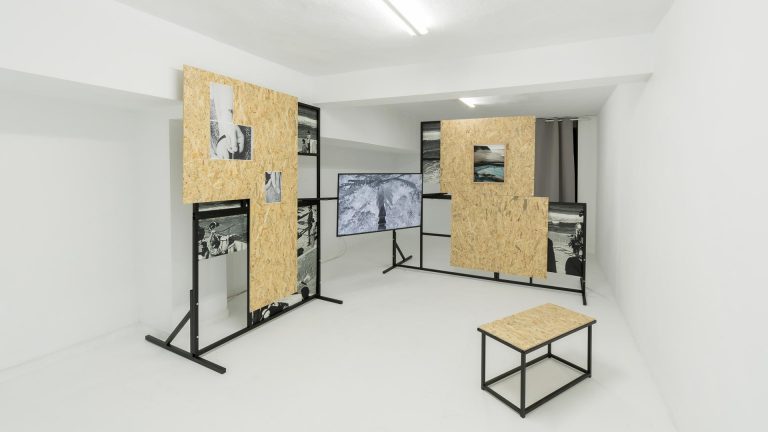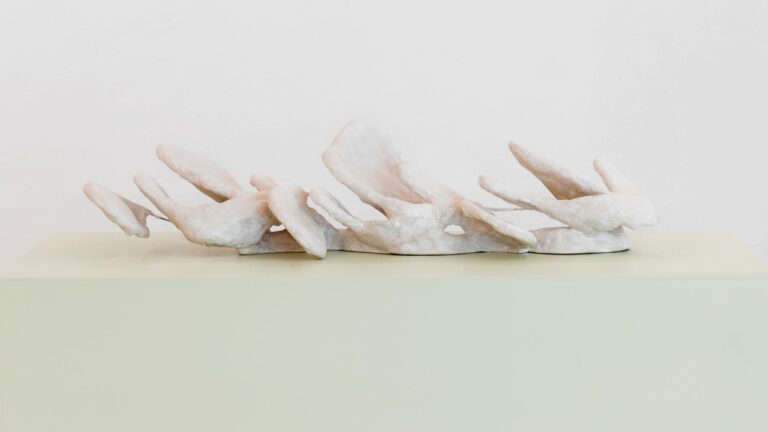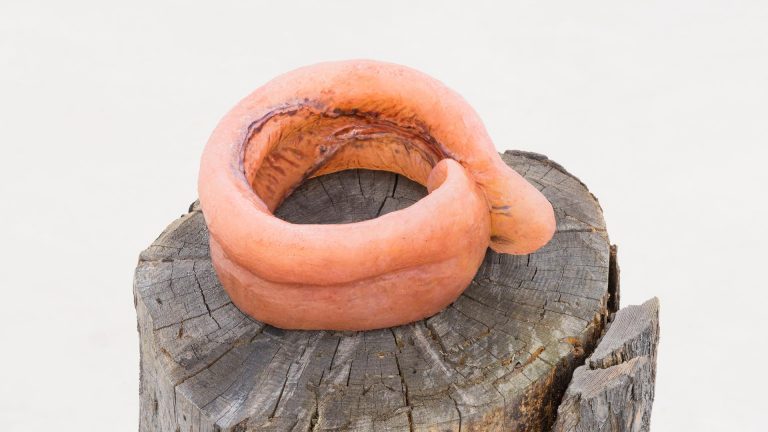Artists: Luis Bisbe de la Fuente and Alberto Peral García
Exhibition title: de lo que uno dice / lo que está así / solo doble
Venue: Galería Alegría, Barcelona, Spain
Date: September 14 – December 9, 2023
Photography: all images copyright and courtesy of the artist and Galería Alegría, Barcelona
It all begins as follows: two artists, with two different ways of creating and looking, but with similar concerns, meet to carry out a shared action. As in any meeting, the moment is as important as the place. Thus, in the course of three long weeks of work, the space itself is progressively incorporated as an essential element of the project. It provides the material necessary for its elaboration, gives up corners and interstices of its architecture and gives proper meaning to those rare objects that are sometimes known as works of art.
This is the starting point of the project “de lo que uno dice / lo que está así / solo doble”, a hybrid exhibition by Luis Bisbe de la Fuente (Malaga, 1965) and Alberto Peral Garcia (Santurtzi, 1966) for Alegria Gallery that combines elements of site specific, group show and solo exhibition, in an act halfway between a dialogue between friends and an ever-changing curatorship. Both Alberto and Luis have developed their work and trajectory creating and arranging objects, looking for their relevance, exploring their relationship with space and the power they have on the viewer’s perception the moment they dialogue and modify that very space. In their works resonates the question posed by the philosopher Jean Baudrillard, in the preface of “System of Objects”, in 1969: “Is there anyone who can classify the world of changing objects with the eye, and achieve a descriptive system?” [1]. In Alberto’s case, this answer has been given by a paradoxical purity of intrusive forms; Luis, on the other hand, has developed, over the years, a subtle poetic of the materialism. In this project, both of them display a collection of objects that interrupt the gaze and modify the environment, showing their resistance to being simply consumed by our crushing idea of reality.
In the creation of this intricate system of exchanges that invades and eats away the gallery, we see how what one discards on one side, is used by the other on another side. We see excavated floors: the cement mass extracted from the ground becomes, a few meters away, a megalithic piece. Where one installs a sculpture, the other applies a coat of paint… We encounter an ambiguous territory where independent interventions interlace, hybridize and generate a common space. It is cut and pasted; it is embedded, suspended, moved, and traversed. Elements are made to disappear and others are summoned. When a work is intervened, it is in fact infected by another. Inside, outside; above and below; centrifugal or centripetal… As a result a catalog is created in which possibilities are explored, fixed and agreed upon. It is constructed, distributed, made and unmade. In doing so, they set ways of being and of understanding of their the practice, in which the spectator is forced to confront this unusual situation of the work of art in its physical, spatial and existential dimension. As Luis has mentioned on occasion, “the treasure is spread everywhere” [2]. A space has been activated, materials have been taken out and works have been deployed to bring us face to face with the ubiquity of this wealth.
In our fluid world, so overloaded with an excess of images, connotations and meanings, the greatest radicality resides in the fact that places, things and forms are only places, things and forms. As if it was an initiatory riddle, Alberto and Luis – Luis and Alberto – bring us face to face with this fact and make us look, once again, at a sequence of resounding objects and places able to reclaim their power and charm. This exhibition is an exercise reminiscent of that Hasidic tale, reported by the philosopher Martin Buber, in which a rabbi leaves his home in search of treasure only to discover, thanks to the help of a foreigner, that it was buried right under the foundations of his own home. The gallerists themselves must have felt something similar when they saw the floor, ceiling and walls converted into elements of an unusual work that only becomes complete when the generosity of one’s home is incorporated into it.
[1] BAUDRILLARD, Jean. El Sistema de los Objetos. Siglo XXI. Madrid, 2010.
[2] BISBE, Luis. Interiorismoyexteriorismo. La Casa Encendida. Fundación Montemadrid. Madrid, 2018.

